Queen Victoria had a significant impact on the Isle of Wight, and we have put together a guide to visiting the Queen Victoria related sites on the Isle of Wight. Queen Victoria first visited the Isle of Wight on a holiday with her mother in 1831 at the age of 12. She enjoyed her time on the Isle of Wight and kept returning, eventually purchasing an estate on the island in 1845.
The Queen’s regular presence on the island helped put the Isle of Wight “on the map” as a Victorian holiday and wellness destination. She continues to intrigue travelers and her former residence Osborne House is now one of the most visited attractions on the island.
Today there are a number of places you can visit that were connected to Queen Victoria or were popular Victorian era destinations, and these include castles, forts, scenic viewpoints, the oldest amusement park in Britain, homes, museums, gardens, hotels, and historical sites. We’ll provide the history of each site and its association with Queen Victoria and the Victorian era, as well as tips and advice on visiting each of these places on the Isle of Wight.
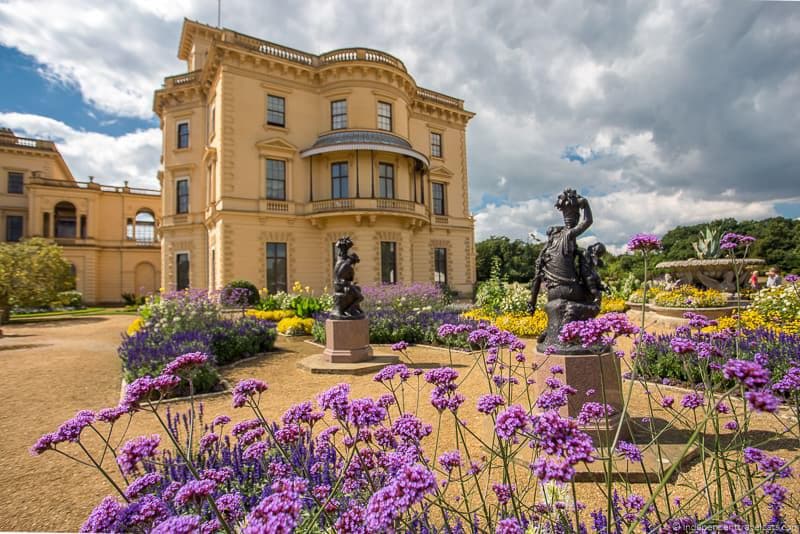
Table of Contents:
Guide to Queen Victoria Sites on the Isle of Wight
Queen Victoria had a tremendous impact on the Isle of Wight, and today you can still visit many of the places associated with the queen and that period. These includes both places that Queen Victoria herself stayed or visited as well as places that were popular destinations for travelers during the Victorian era.
Our recommendations include castles, residences, museums, amusement parks, scenic spots, forts, churches, and gardens. We’ve also included a couple of memorials to Queen Victoria on the island as well as museums that include information about the Victorian era. In compiling this list we were surprised not only by the number of places associated with Queen Victoria, but also the sheer number of great attractions on the Isle of Wight! Even if you have only a mild interest in Queen Victoria, most of these sites are still worth the visit.
Below the Queen Victoria sites are listed based on geography, starting with the closest to East Cowes and then heading clockwise around the island, forming a loop around the island ending back in West Cowes.
Depending on where you arrive on the island (different ferry services have different arrival ports) and where you are staying on the island, you can adjust the sites into the order that best fits your travel needs and interests. But hopefully this list will help you build your own itinerary!
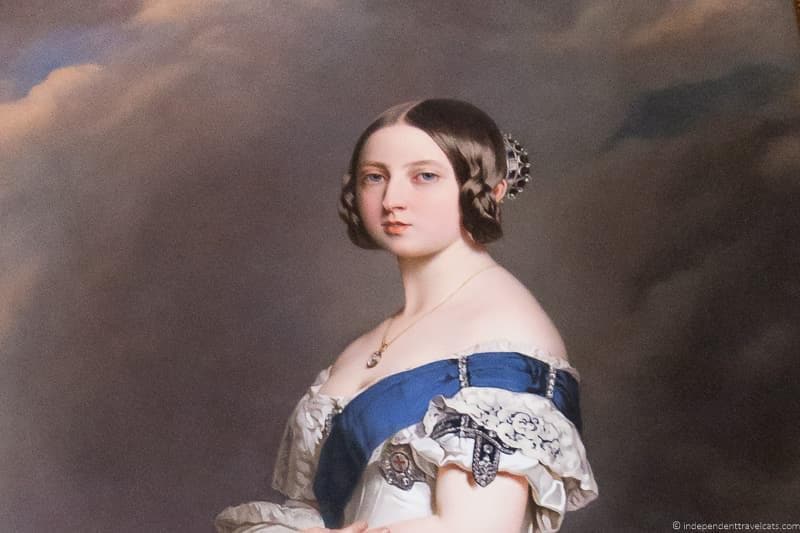
Osborne House
Address: York Avenue, East Cowes, Isle of Wight, PO32 6JX
Entry Fee?: Yes. Free entry with English Heritage pass. Book tickets here.
Website: http://www.english-heritage.org.uk/visit/places/osborne
If you were only going to visit one Queen Victoria related site on the Isle of Wight, Osborne House would be our pick. This large Italianate style seaside house was designed by Prince Albert and built between 1845 and 1851. The new house replaced a 3-story Georgian mansion that was on the property when they purchased the estate.
Osbourne House was a much loved home for Queen Victoria and her family (of 9 children!), probably second only to Balmoral among her favorite royal residences. Victoria spent a lot of time here throughout her life, especially after the death of Albert, as it offered a less formal private retreat away from the public eye.
Below are some thoughts from Victoria’s journals as well as a letter to Lord Melbourne about her first visits to Osborne (before it was renovated and rebuilt) and her first time going into the sea at Osbourne beach:
The grounds are delightfully private, & the sun was then shining brightly. I am delighted with the house, all over which we went, & which is so complete & snug. The rooms are small, but very nice, & the offices & stabling, very good. With some few alterations & additions for the Children, it might be made an excellent home. We walked out a little, & the grounds are charming & very extensive, with a great slope down to the sea, a beautiful view. All seemed like a dream to me, the delightful long expected French visit, now already a thing of the past, & we now here, at Osborne, in the Isle of Wight. (October 15, 1844)
...it is impossible to imagine a prettier spot—valleys and woods which would be beautiful anywhere; but all this near the sea (the woods grow into the sea) is quite perfection; we have a charming beach quite to ourselves. The sea was so blue and calm that the Prince said it was like Naples. And then we can walk about anywhere by ourselves without being followed and mobbed… (April 3, 1845, letter to Lord Melbourne, [Esher & Benson, 1908])
Afterwards drove down to the beach with my maids & went into the bathing machines, where I undressed & bathed in the sea, (for the 1rst time in my life) a very nice bathing woman attending me. I thought it delightful till I put my head under water, when I thought I should be stifled. – (July 30, 1847)
Queen Victoria would die at Osborne House on January 22, 1901. Victoria’s son, Kind Edward VII would inherit the royal residence but did not want to maintain it, so he gave the estate to the nation in 1902. It would later be a naval college and eventually opened up more and more to the public.
The house has also been used for filming projects such as the 2017 Victoria and Abdul film starring Judi Dench, which tells the story of Queen Victoria’s friendship with an Indian servant Abdul Karim.
Visitors can tour the inside of the house and see the state rooms (the Durbar Room is an architectural highlight), family rooms, and special exhibitions. Outdoors visitors can explore the Swiss Cottage (a playhouse for the royal children and now a museum), gardens, playgrounds, and beach.
If it is a nice day, a lot of families come to spend time at the beach and there is often a vendor selling ice cream and Punch and Judy puppet shows here during the busier summer months. There are several spots selling food and drinks on the grounds so you can easily grab a snack or meal while you are here although note that many are closed during the winter. Desserts are particularly popular here as so many are associated with Victoria and Osborne House such as the Victoria sponge, the Battenberg cake, Beatrice cakes, and Osborne pudding.
Osborne House is one of the island’s most popular attractions so we’d recommend visiting early near opening or later in the afternoon to avoid the most crowded visiting times, especially during the busy summer months. Winter is a nice time to tour the house as there are fewer visitors and special holiday decorations and events such as Victorian Christmas festivities.
If you have kids, check for special children’s trails and events. There are picnic tables and areas available if you want to bring along your own food. If you are visiting during summer, you may want to bring along beach gear to spend time enjoying the beach.
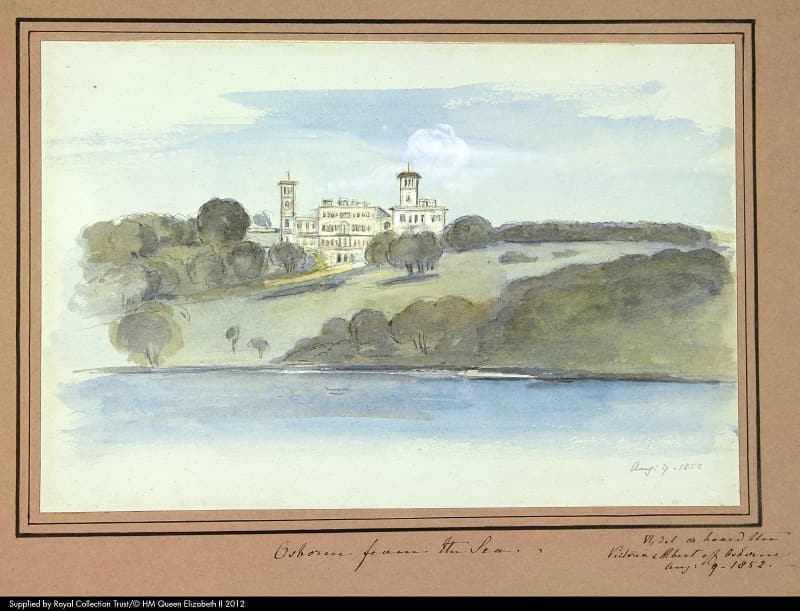
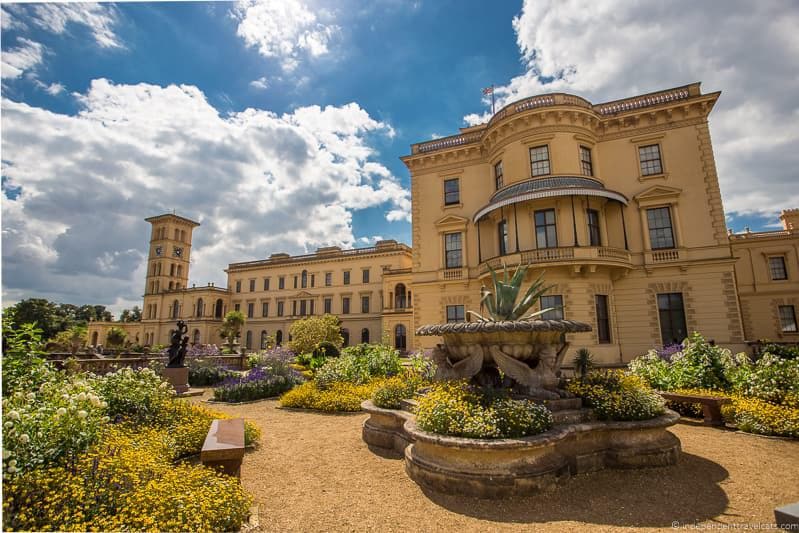
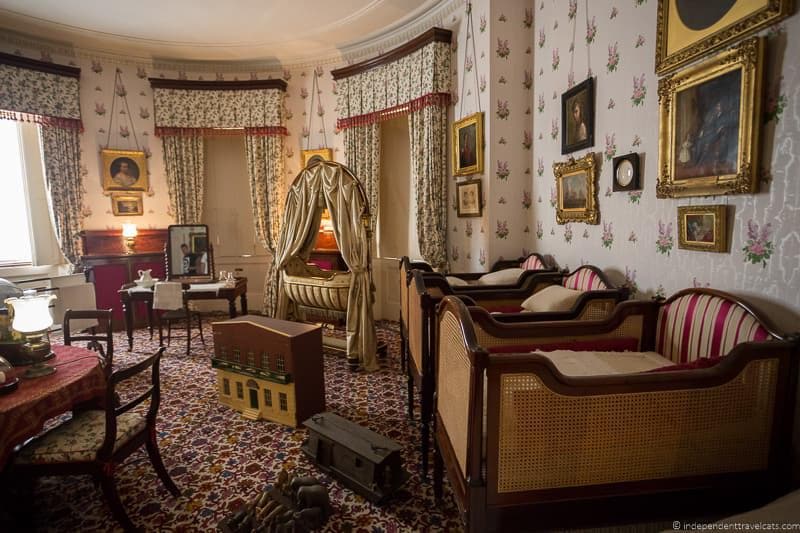
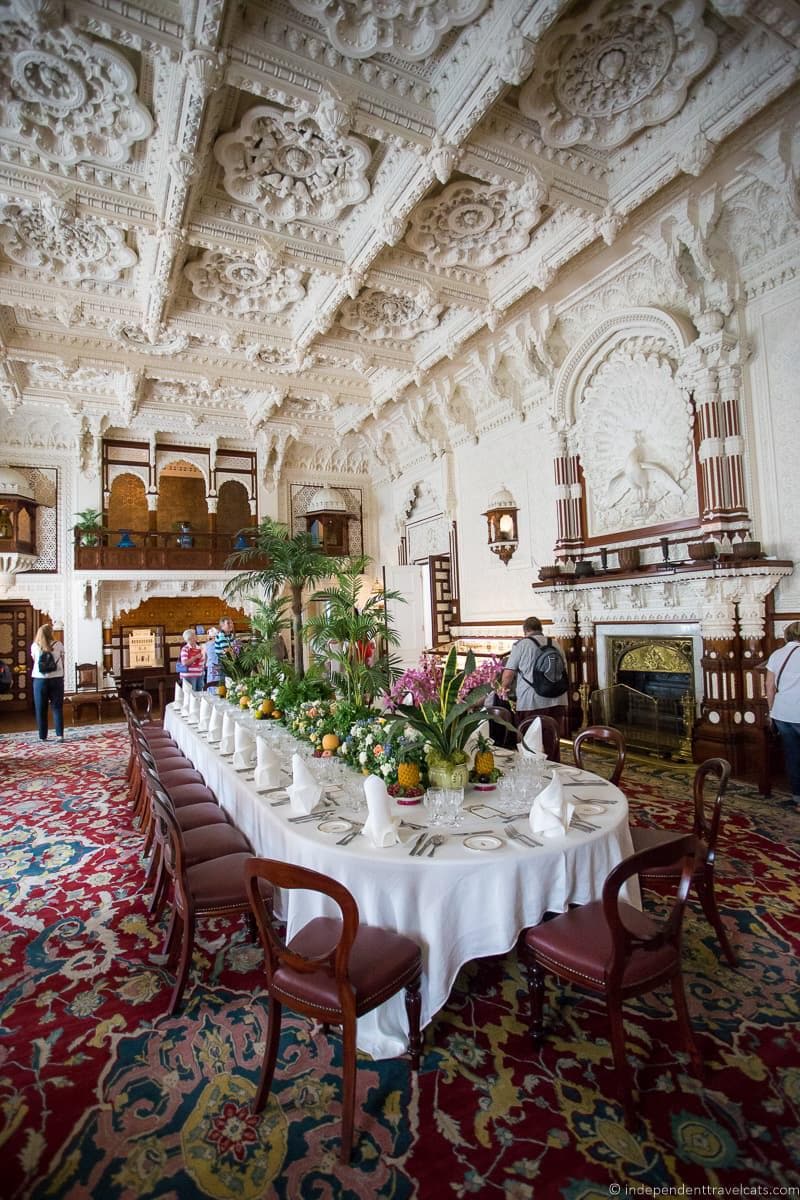
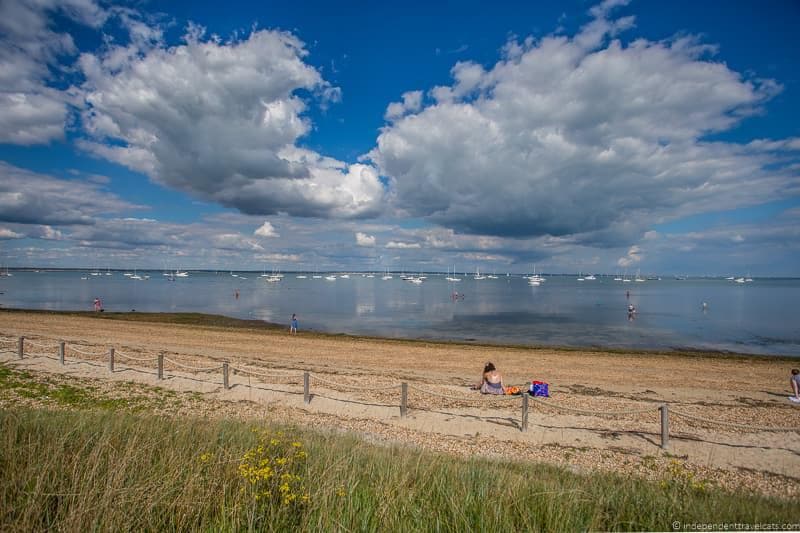
St. Mildred’s Church
Address: Beatrice Avenue, East Cowes PO32 6HR, United Kingdom
Entry Fee?: No
Website: http://www.iow.uk.com/whippingham-church/index.htm
St Mildred’s is a Church of England parish church in the village of Whippingham. It was built by Albert Jenkins Humbert around the same time as Osborne House and the design is believed to have been influenced by Prince Albert. This church is a short distance away from Osborne House and was the main place of worship for Queen Victoria and the royal family on the Isle of Wight.
In 1885, Queen Victoria’s youngest child, Princess Beatrice married Prince Henry of Battenberg at the church. Members of the Battenberg/Mountbatten family still occasionally visit, and you can ask the church staff about the latest visits.
Visitors to the church can learn about the architecture, history, and royal family associations here. There are many memorials in the church to members of the royal family, a side chapel is dedicated to the Battenberg/Mountbatten family, and a few members of the royal family (including Princess Beatrice) are buried here. The church also has a permanent exhibit about the royal family which includes information, photos, and objects such as a replica of Princess Beatrice’s wedding dress.
There is a small coffee shop near the parking lot and the staff here are volunteers and really friendly and helpful. We highly recommend purchasing something from the little shop, buying a coffee, or leaving a donation to help support the church and its upkeep. During our visit, we bought a detailed map guide which was really informative. St. Mildred’s is an active church and worship services are held each Sunday.
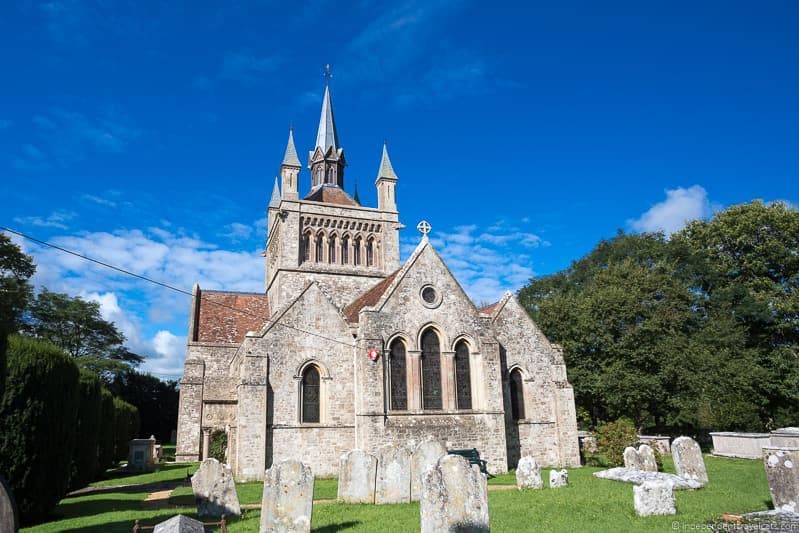
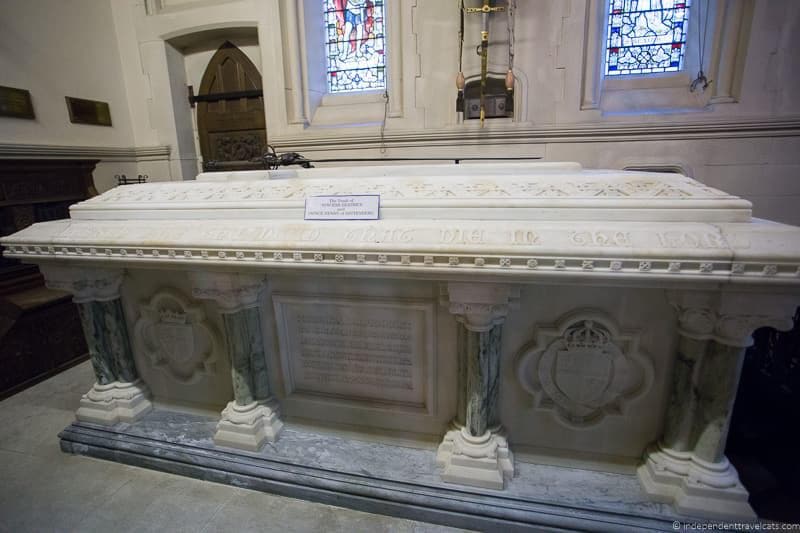
Museum of Island History
Address: Visitor Information Centre, Guildhall, High Street, Newport PO30 1TY
Entry Fee?: Yes (£2 per adult, £1.20 per child)
Website: https://www.iwight.com/Museum-of-Island-History
The Museum of Island History is located in the same building as the main Visitor Center on the island so I would recommend this as an early stop on your trip if you’re interested in learning more about the Isle of Wight’s history. Even if you don’t visit the museum, you can pick up brochures, bus timetables, and chat with staff about things to do on the island.
The small museum has been recently renovated and includes a series of displays that tell the history of the island from prehistoric time to present. The museum shows a collection of artifacts and photos, and has several hands-on exhibits and activities. A section of the collection covers the Victorian period and gives a good overview of life on the island at that time. Photographer James Dore is highlighted who took a photo of Queen Victoria’s funeral processional through Cowes in February 1901 as her coffin was being transported to Trinity port.
The neoclassical building the museum is housed in is also notable for having been designed by famous British architect John Nash.
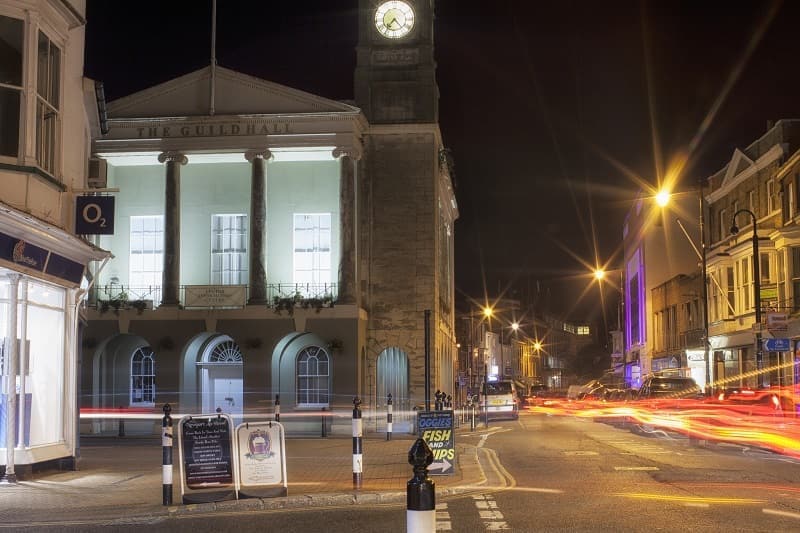
Isle of Wight Railway
Address: Havenstreet Station, The Railway Station, Havenstreet PO33 4DS
Entry Fee?: Yes
Website: http://www.iwsteamrailway.co.uk
Although the first public railway opened in England in 1825, the first railway on the Isle of Wight did not open until 1862. In 1875, the Whippingham station was opened as a private railway station near Osborne House for the private use of the Queen, the royal family, and visitors and staff coming and going from the house. From the station, arriving passengers would be transferred to horse and carriage to reach Osborne House.
The Queen is known to have used the station and Isle of Wight railway on at least one occasion, the first (and perhaps only) being on February 13, 1888 from Whippingham to Ventnor. The Queen eventually opened up the infrequently used royal station to the public. Villagers were likely quite happy to use such a grand station. However, it was never a busy station given its isolated location and it eventually closed in 1953. Today the station has been converted into a private residence.
Although Victoria may not have used the Isle of Wight railway much, she did use the railway for getting to Osborne House. She usually traveled by train to Gosport station (near Portsmouth on the mainland) and then took a barge, ferry, or yacht across the Solent to reach Osborne House. After purchasing Osborne House, the royal family had its own private station at Gosport built called the Royal Victoria Station. The royal station was last used to transport Victoria’s coffin to London in 1901 after it arrived aboard the Royal Yacht Alberta from the island.
Today visitors can visit the Isle of Wight Steam Railway to ride and learn about the railway system on the island. The rail journeys are aboard a real steam-powered train and passengers ride in restored Victorian and Edwardian carriages to enjoy some of the island’s scenery. There are also restored carriages, a workshop, a museum, and a gift shop at the Havenstreet station to see here.
If you book a train ride, we’d recommend coming to the Havenstreet Station about an hour before your ride to visit the Train Story Discovery Centre, rail history museum, gift shop, and workshops before your ride begins. You’ll also find the separate Haven Falconry Birds of Prey Centre just a short walk from the rail station.
There is food and snacks available during normal operating hours. Trains do not run every day, so be sure to check the schedule and it is best to book ahead if you can to avoid disappointment.

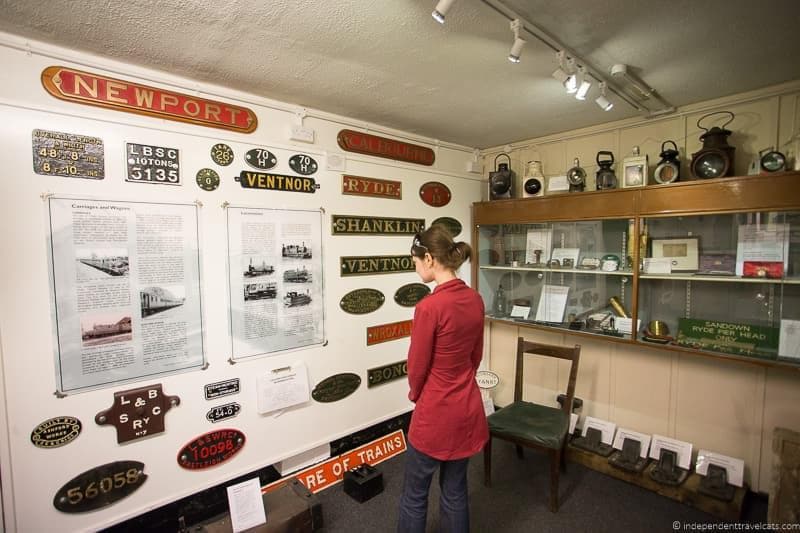
Newport Minster
Address: St Thomas Square, Newport PO30 1SL, United Kingdom
Entry Fee?: No
Website: https://www.newportminster.org/
Newport Minister, also known as St. Thomas Church, is one of the primary Anglican churches on the Isle of Wight. The first church here was built in the 12th century, but the current one primarily dates to the 1850’s when the royal family had it rebuilt.
The Queen heard the story of Princess Elizabeth, the daughter of Charles 1 (who was executed in 1649), who spent much of her life as a prisoner and died (probably of pneumonia) at age 14 at Carisbrooke Castle. The young princess had been buried at Newport Minster in a poorly marked grave. The Queen and Prince Albert did not feel that the church at the time was in good shape or fit to house the remains of the unfortunate princess.
The story is interesting and perhaps gives a small insight into Victoria’s nature. Elizabeth Stuart died in 1650 at Carisbrooke Castle so it was over 200 years later that Queen Victoria decided to rebuild the church in her honor. Prince Albert was there to lay the foundation stone for the church in 1854. Queen Victoria commissioned a marble memorial to Princess Elizabeth that was made by sculptor Carlo Marochetti. Victoria presented it to the church in 1857 and two stained glass windows were also commissioned above the memorial to provide more light.
There is a plaque on the memorial that reads:
To the memory of The Princess Elizabeth, daughter of King Charles I, who died at Carisbrooke Castle on 8 September 1650, and is interred beneath the chancel of this church, this monument is erected as a token of respect for her virtues and of sympathy for her misfortunes, by Victoria R., 1856
After Albert died in 1861 a memorial plaque with a carved portrait of him was placed on the north wall of the Lady Chapel between the two stained glass windows. Visitors to Newport are welcome to explore the church which houses several historical items as well as the memorials to the princess and Albert. Regular worship services are held here each Sunday as well as on holidays.
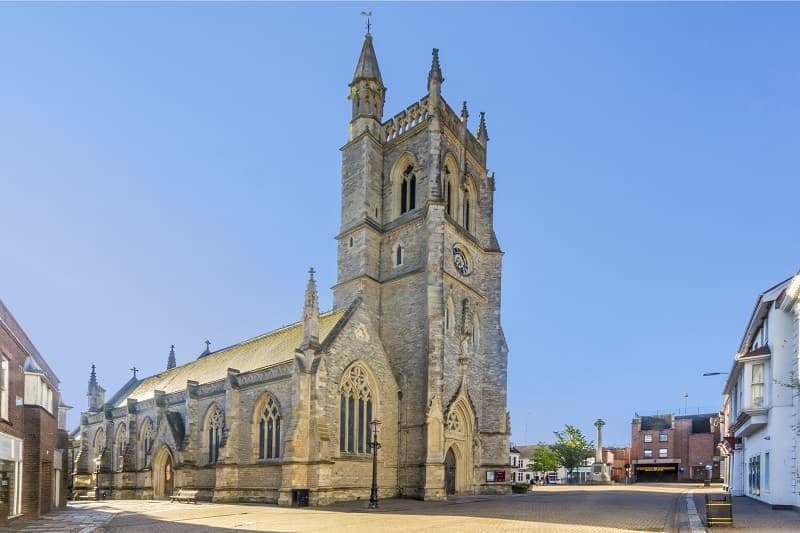
Queen Victoria Memorial
Address: St James Square, Newport, Isle Of Wight, PO30 1UX
Entry Fee?: No
Website: http://www.isle-of-wight-memorials.org.uk/others/newportvictoria.htm
Queen Victoria was the most notable resident of the Isle of Wight and remains the most famous person to be closely associated with the island. Her residence and frequent visits here helped increase interest in the island as well as tourism and commerce. After her death in 1901, an elaborate memorial made by Percy Stone was erected in front of the County Club in Newport in 1903.
The memorial is tall with three bronze lions near the bottom, three human figures above them, and then a Gothic tabernacle and slender spire at top. The memorial still stands in St James Square off St. James Street near the corner of High Street.
Carisbrooke Castle
Address: Castle Hill, Newport PO30 1XY, United Kingdom
Entry Fee?: Yes. Free entry for English Heritage Pass holders.
Website: http://www.english-heritage.org.uk/visit/places/carisbrooke-castle
Carisbrooke Castle is a motte-and-bailey castle that has its origins in the 12th century, and was probably built on the site of a former Roman fort. It was used as a defensive castle, a royal prison (Charles I was famously imprisoned here), a royal residence, and as a home for the Governors of the Isle of Wight.
Queen Victoria visited the castle, and her youngest daughter Princess Beatrice used it as a part-time residence (as the Governor of the Isle of Wight) from 1913 until her death in 1944. Before moving into the castle, Princess Beatrice had already been involved with the castle and she helped collect much of the material for the Carisbrooke Castle Museum which opened in 1898. The museum is the only public museum in the UK founded by a member of the Royal family.
Below are a couple of snippets from Victoria’s journals about her first visit to Carisbrooke Castle and the opening of the new museum:
The Castle is quite in ruins, & stands in a beautiful situation. The view from the keep is very extensive & fine. One can see between Osborne & Portsmouth, the Downs being on the other side. We saw the very deep well (300 ft: deep, 220, to the water’s edge, & 90 ft: deep of water). A poor little donkey goes into the huge wheel, which he turns, winding up buckets of water, & he has been doing this now for 15 years! We were charmed with the views, & the Island is really beautiful. (May 14, 1845)
Beatrice & Arthur had been to Carisbrooke Castle early in the afternoon to be present at the opening of the Museum, which has been restored & adapted as such, as an Island Memorial to dear Liko [Henry, Prince of Battenberg]. It is above the old gateway. A fine portrait of Liko, by Angeli, given by Mr Govett, is placed in the Museum, which is to contain relics & Island antiquities. The Ceremony was I, hear, very touching & over 2000 people were there. It was very trying for poor dear Beatrice, though she was so touched at all the kindness shown. (August 11, 1898)
The castle is now owned and operated by English Heritage and open to the public. Visitors can walk around the Norman Keep and climb the ramparts to take in the views, visit the Chapel of St. Nicholas, learn about King Charles I imprisonment, meet the resident donkeys, explore the gardens, and visit the Carisbrooke Castle Museum inside the castle.
There is a tea room on site if you get hungry (open seasonally) and there is also a picnic area for those who want to enjoy a picnic outside.
This is one of the most popular attractions on the island, so the best times to visit are in the morning near opening or later in the afternoon, especially in the summer. Great place for families as there is a lot to keep children interested and lots of outdoor spaces for them to enjoy.
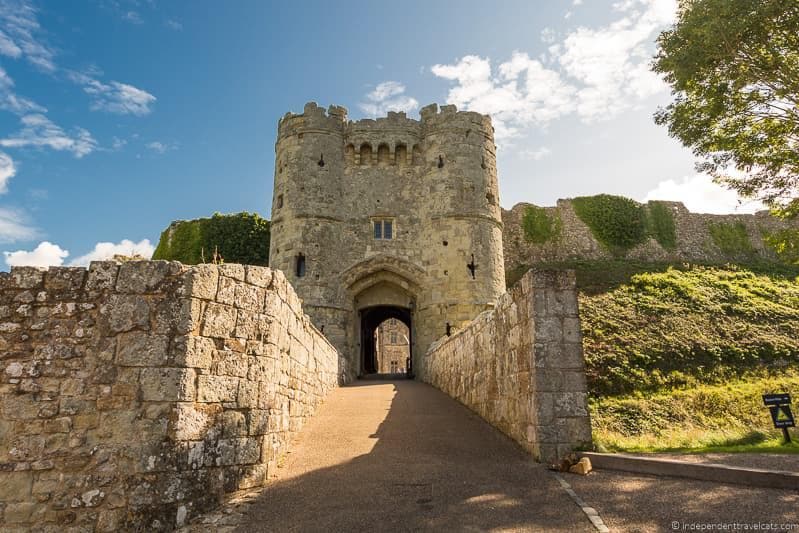
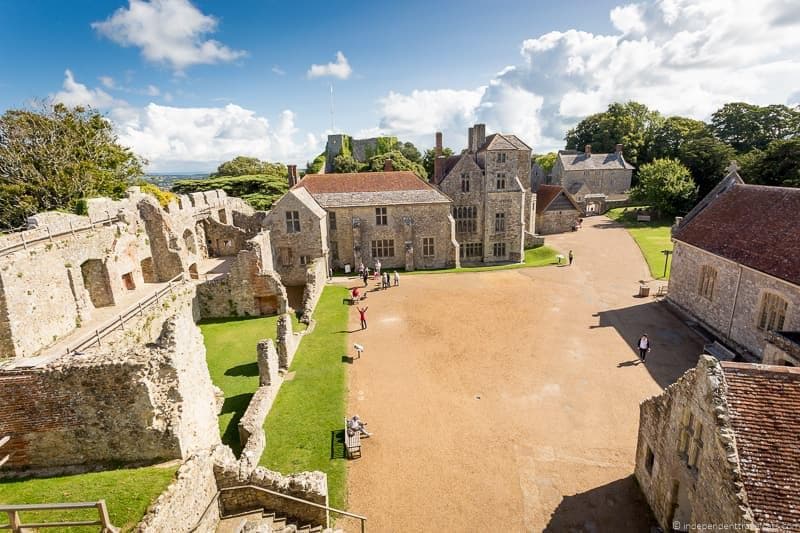
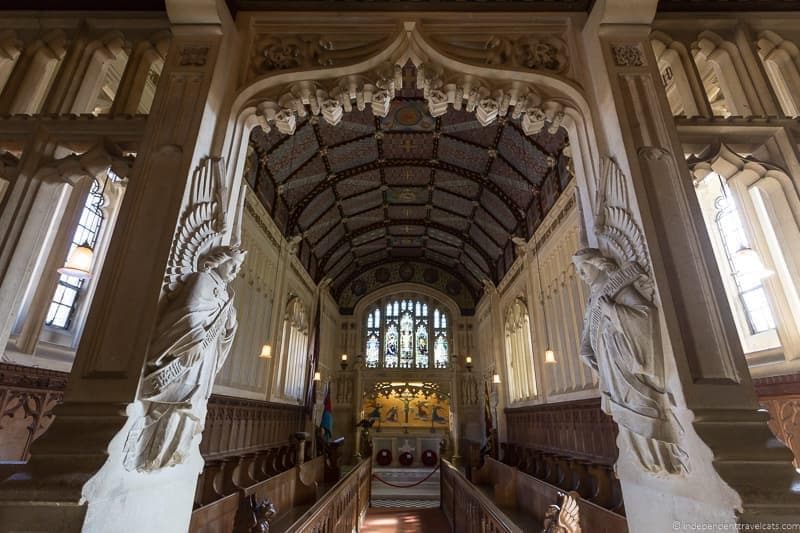
Shanklin Chine
Address: 3 Chine Hill, Shanklin, PO37 6BW, United Kingdom
Entry Fee?: Yes
Website: https://www.shanklinchine.co.uk
The Shanklin Chine is a deep narrow ravine that developed thousands of years ago, and it was once a difficult trek to get around it. Starting in 1817 it was opened as a paid tourist attraction after William Colenutt excavated the present path and opened it to the public so they could walk along the ravine. Historically, the entry was through the Fisherman’s Cottage (now a pub) and a number of famous people visited here including Jane Austen, John Keats, Charles Dickens, Prince Albert, and King Leopold I.
It became a popular attraction in the Victorian and Edwardian eras as the Isle of Wight became known as a wellness and resort destination, bolstered in popularity by Queen Victoria taking residence on the island. I could not find any evidence that Queen Victoria walked through Shanklin Chine, but she definitely visited Shanklin. On August 10, 1846, she noted in her journal that she traveled to Shanklin with Albert and her aunt and uncle (King Leopold I and Queen Louise of Belgium), and that both Albert and her uncle walked down to the chine that day.
Today you can still walk along almost the same route as the Victorians and the views have not changed too much since that period. The walk is scenic and full of lush foliage (probably at its best in Spring) and the history here is interesting. At one end is a viewpoint where you can peer down at the main waterfall. The heritage center and exhibitions along the path give you information about the geology, the local fishing industry, smuggling, the coming of the railway, the building of the pier, Shanklin as a Victorian spa town, and the WW2 Operation PLUTO (a section of the pipe is on display).
There are two separate entrances to Shanklin Chine, the first is the upper entrance in the village (next to the Crab Inn) and the other is closer to the beach next to the Fisherman’s Cottage. The upper entrance is preferred by many visitors because then you are walking down rather than walking up. There are steep inclines and stairs, so it is not recommended for those with mobility difficulties.
At night the path is lit with a series of lights and many visitors visit during both the day and night (get a day/night return ticket to visit a second time within a 7 day period).
Open seasonally so check the opening dates and times before visiting. The sandy beach below, Shanklin Beach, is free to visit and is a good place to spend an afternoon with the family.
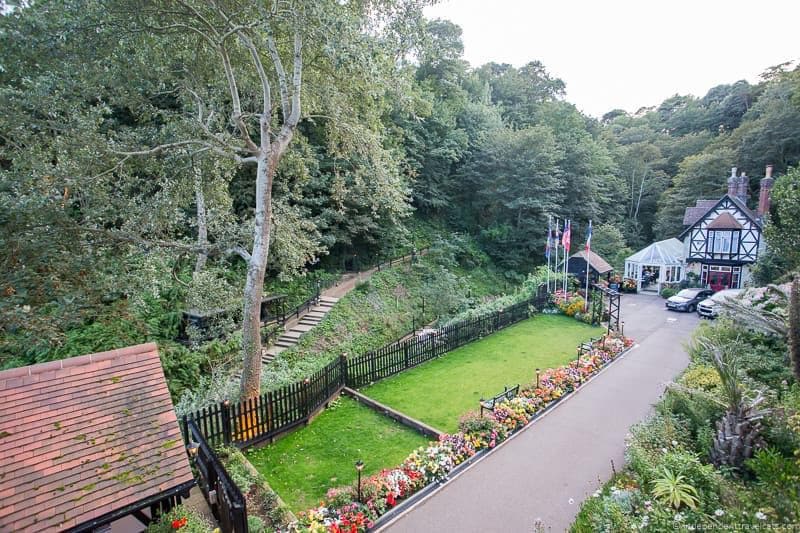
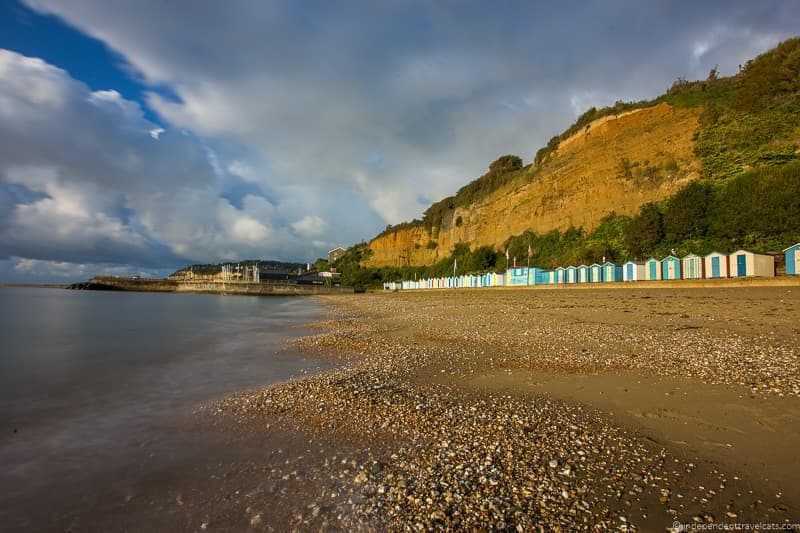
The Royal Hotel
Address: Belgrave Road, Ventnor, PO38 1JJ, United Kingdom
Entry Fee?: N/A
Website: https://www.royalhoteliow.co.uk/
The Royal Hotel is a 4-star hotel in Ventnor that was founded in 1832. The hotel was originally a coaching inn called Fishers Hotel and was named after its original owner John Fisher. Later after Queen Victoria visited the hotel (for meals or tea), the Ventnor hotel was renamed The Royal Hotel. Victoria’s royal patronage of this hotel brought it more fame and guests.
The hotel is one of the oldest hotels on the island and is one of only about 30 establishments in the world to be listed in all of the Michelin Guides since they were first published in 1911. The hotel has an outdoor swimming pool and garden area and is within walking distance of Ventnor Beach.
Today guests can stay in one of the 51 well-appointed rooms, eat at its award-winning restaurant, or have a snack or afternoon tea in the conservatory like Queen Victoria. The Royal Hotel offers a number of afternoon tea options each afternoon, depending on your appetite, ranging from £4 per person for tea and a slice of cake to £30 pounds per person for a full tea service with a glass of champagne.
Laurence and I had to stop for the aptly named Royal Tea which came with sandwiches, scones, and cakes served in their sunny conservatory. It was an enjoyable and yummy break in our day, and the service here was great. If you are not a guest of the hotel but would like to have afternoon tea or dinner, be sure to make a reservation in advance.
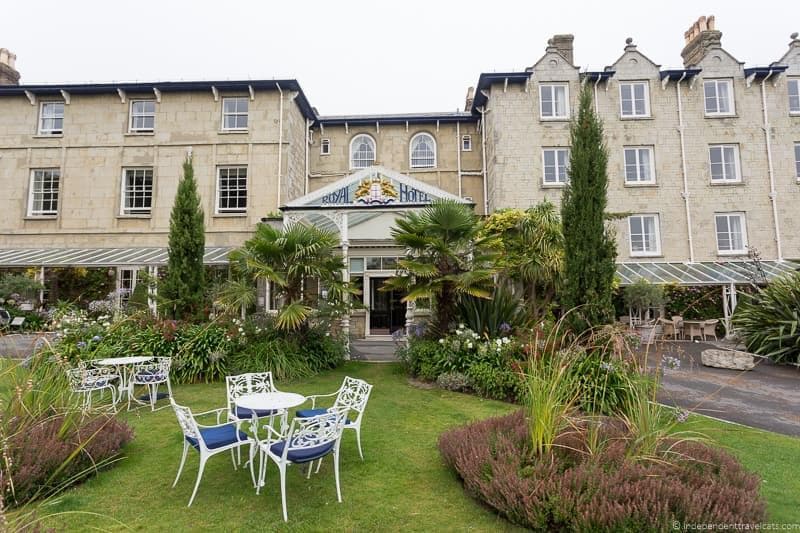
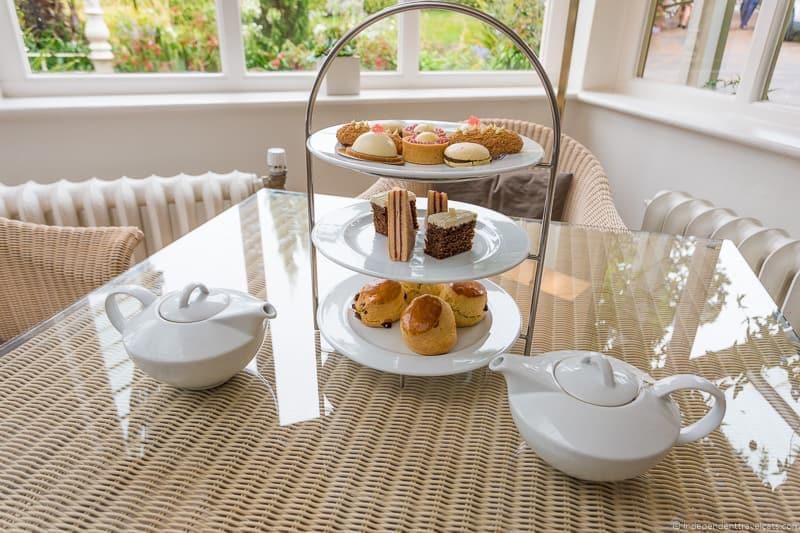
Ventnor Botanic Garden
Address: Undercliff Drive, St Lawrence PO38 1UL, United Kingdom
Entry Fee?: Yes
Website: https://www.botanic.co.uk/
Ventnor Botanic Garden was originally the site of the Royal National Hospital for Diseases of the Chest, the location chosen because of the mild sub-tropical microclimate. The hospital opened in 1869, and Queen Victoria’s daughter, Princess Louise, laid the first stone for the hospital. The hospital was visited by several members of the royal family, including Queen Victoria at least once in 1888.
The hospital (and garden) are located in the heart of the Undercliff area with Steephill beach, now known as Steephill Cove, located just below. This area was a popular destination in Victorian times and was visited by the royal family even prior to the building of the hospital. The hospital closed in 1964 and most of the buildings were later demolished.
Here are a couple quotes from Victoria’s journals:
It is so beautiful along the Undercliff, with the high rocks above. Had not been there since 1831!! We lunched at a small quaint little house “the Orchard”, with a garden overhanging the sea, but so overhung by the cliff behind, that it is very closed in. A footman had been sent on before, to prepare everything. Walked a little in the garden afterwards & at ½ to 4 started on our homeward drive. (February 13, 1867)
Got out at the Consumptive Hospital, which is close on the sea, with a fine garden. It is built on the Cottage system, & there are detached Blocks. We were received by Mr. Saunders (Chairman), Mr. Colman (Treasurer), & Dr. Coghill the chief Physician (a native of Aberdeenshire). We were taken over the Hospital, which is beautifully arranged with every comfort & modern appliance. In the large hall, we saw a patient, sent by me, (I have several beds) a man of the name of Katnach from Balmoral. (February 11, 1888)
The Ventnor Botanic Garden opened in 1970 and started as an extension of the original hospital garden. The garden is known as “Britain’s hottest garden” because of its subtropical microclimate, and species can grow here that cannot be grown outdoors elsewhere in the UK. The garden includes a few Victorian era plants, including the “Chusan Palm” collection, which were donated to the hospital by Queen Victoria and are the oldest palms in the British Isles.
Today, visitors can visit the large garden and see hundreds of plant and tree species, which include Red Hot Pokers, magnolia trees, and cacti. A glasshouse protects the most tropical and delicate plants like the orchids and the Victoria amazonica (a giant water lily species named after the monarch). The garden’s Heritage Centre provides a history of the garden and is housed in the former boiler room of the consumptive hospital.
There is also a cafe, restaurant, plant shop, and gift shop located at the garden. Since most of the plants are outdoors along a series of paths and trails, we’d recommend visiting on a good weather day.
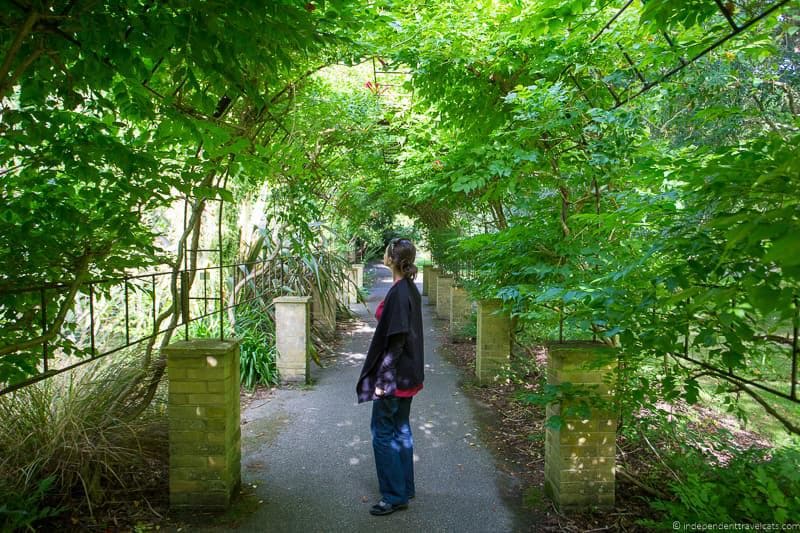
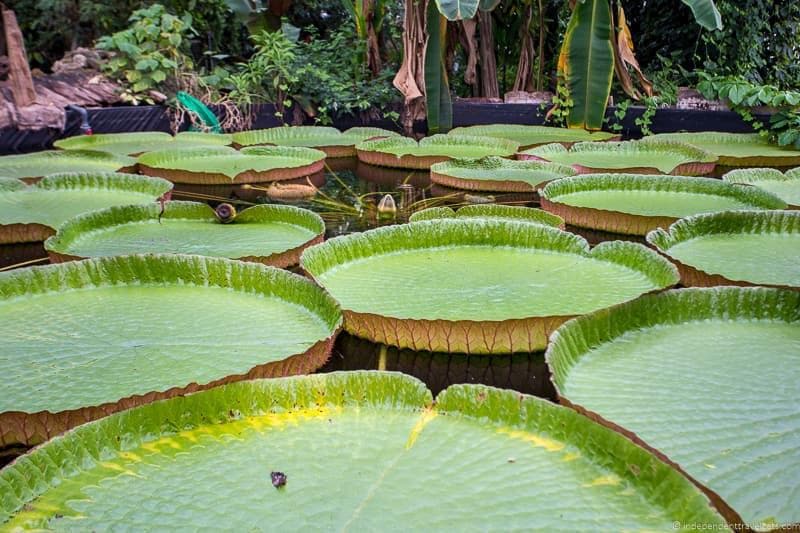
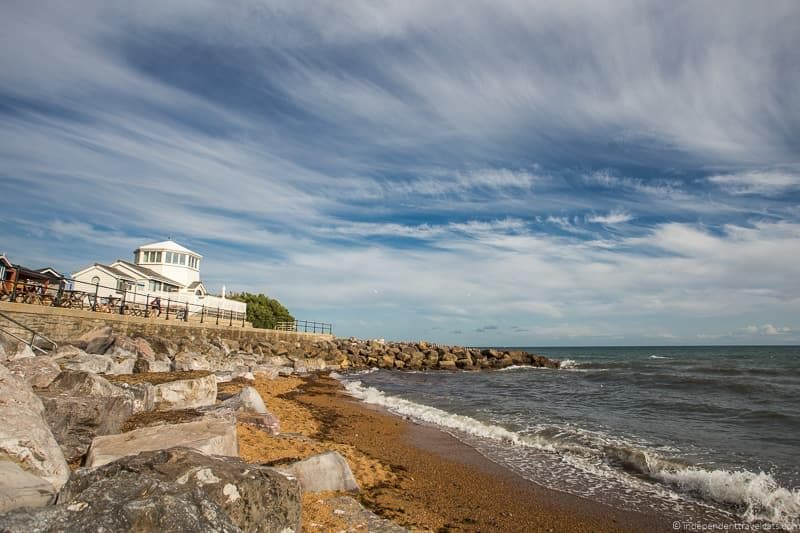
Blackgang Chine
Address: Blackgang Chine, Near Ventnor, Isle of Wight, PO38 2HN United Kingdom
Entry Fee?: Yes
Website: https://blackgangchine.com/
Blackgang Chine is the oldest operating amusement park in the UK, believed to have opened in 1843. In Victorian times, it was more of a scenic pleasure park and site of curiosities. It was named for the now gone coastal ravine (lots of land and the beach have been lost to landslides).
In August 1853 Queen Victoria would visit and see the large skeleton of a whale, the park’s first main attraction, which had washed up on the Isle of Wight in 1842. She noted the following in her journal about her visit:
At Blackgang, which we reached at 4, we got out, & walked down to the Chine (curious, but with little water in it) & the beach, which is very fine, — the sea magnificent & the sun shining so brightly on its calm surface. We amused ourselves picking up pebbles. From the top of the cliff down to the beach, it is 400 ft: & the descent was difficult, but the ascent up some rude steps cut here & there in the clay, was very laborious & steep. It made me very hot. We went into a cottage to see the skeleton of a whole, which had been stranded there, in ’42, — very curious.
Although the park now includes hundreds of rides, games, and attractions, the whale skeleton remains one of the most iconic attractions at the park. The park is fairly large with a number of sections with a mix of Victorian era heritage attractions such as a mirror maze, Old West village, and a haunted manor house and more modern ones such as a small roller coaster, water slides, and animatronic dinosaurs.
The park is best suited for families with children but Laurence and I enjoyed our visit here. We came later in the day and were surprised by how much stuff was here and we were not able to see even half of what the park offered. It is a popular spot in the summer and I’d arrive in the morning to get the most of your tickets as you can easily spend the whole day here.
The amusement park is open seasonally and the same company also operate another amusement park called Robin Hill near Newport on the Isle of Wight. If you plan to visit both parks, joint discounted tickets are normally available.
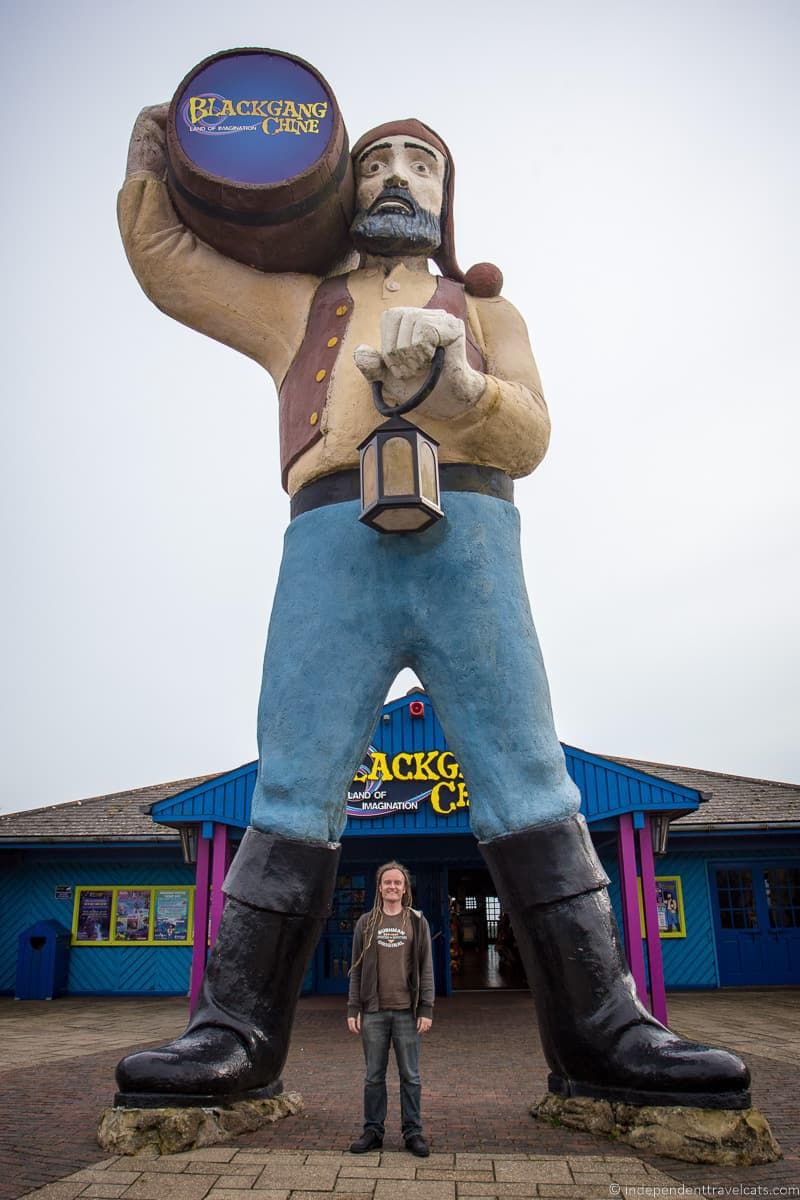
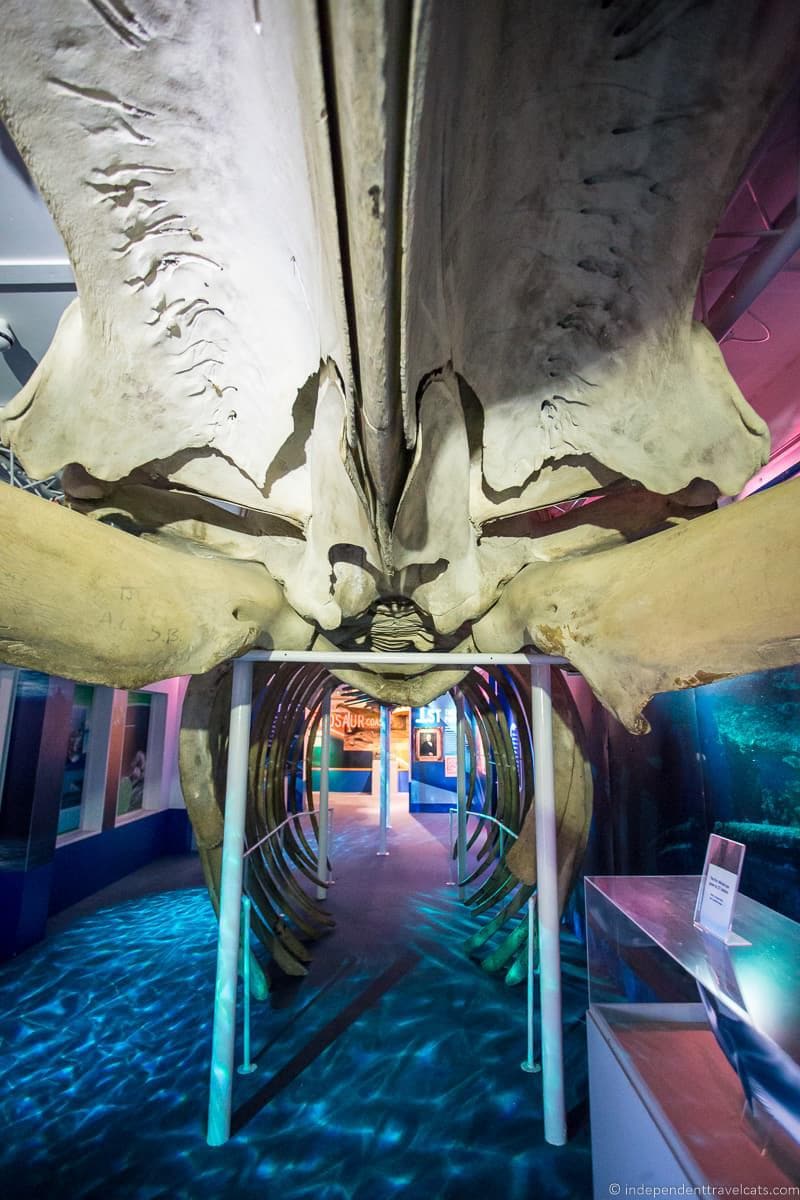
Dimbola
Address: Terrace Lane, Freshwater Bay, PO40 9QE, United Kingdom
Entry Fee?: Yes (£2 per adult, £1.20 per child)
Website: http://www.dimbola.co.uk/
Dimbola was the name of the former home of Victorian photographer Julia Margaret Cameron and her family. Although not widely known, Cameron is considered an early pioneer in photography and her photography is on display at museums around the world. Her photography focused on close-up portraits and fancy-dress tableaux, and she photographed family and friends as well as famous residents and visitors to the island. Her famous subjects included Alfred Lord Tennyson, Charles Darwin, and Robert Browning.
The Dimbola Museum and Gallery showcases the work of Julia Cameron as well as changing exhibitions from contemporary photographers from around the world. The museum has tea rooms, displays of Victorian camera equipment including a large dry plate camera, and a Victorian dress up room. The museum is also a place for workshops and special events such as drawing classes, sun printing, and wet plate collodion photography.
This is a great stop for those interested in Victorian era photography. Although Cameron never photographed the royal family, it is possible that Queen Victoria was aware of the photographer as a fellow resident of the Isle of Wight and a female photographer which were rare in those days.
The main local photographer for the Queen and the royal family on the Isle of Wight was Cornelis Jabez Hughes, who ran a studio in Ryde from 1862 until his death in 1884. Several of his photos are on display at the National Portrait Gallery in London.
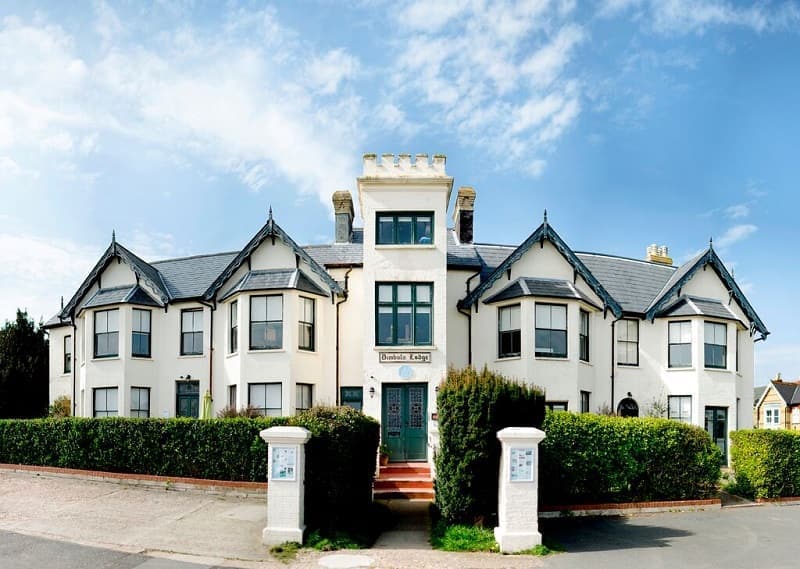
Farringford
Address: Bedbury Lane, Freshwater Bay PO40 9PE, United Kingdom
Entry Fee?: Yes
Website: https://farringford.co.uk/
One of the island’s most famous residents at the time, second only to the royal family, was Poet Laureate Alfred, Lord Tennyson who was one of the most respected poets of the Victorian era. Tennyson would visit the Isle of Wight and stay at Farringford in 1853, eventually buying the house and moving to the island in 1856 to live a more peaceful life away from London.
He formed a close circle of friends of the island and his residence attracted a number of artists and intellectuals, some of whom also moved to the island. Tennyson was at the center of the Freshwater Circle, a group of local artists and intellectuals, and became a close friend of Julia Margaret Cameron at Dimbola.
Tennyson’s presence on the island attracted more people to the area making Freshwater a popular retreat destination for both artists and tourists. The influx of tourists eventually caused Tennyson to relocate in 1969 to Sussex but he continued to visit Farringford often.
Tennyson’s work was regularly read by and a favorite of both Queen Victoria and Prince Albert. Prince Albert was partially responsible for his appointment as Poet Laureate. Prince Albert visited Farringford on at least one occasion which was an unexpected visit in 1856 after the poet had just moved to the island.
The poet also visited Osborne House, and it is known that he met with Queen Victoria on at least two occasions. Tennyson and his work were often mentioned in Queen Victoria’s journals, and in In January 5, 1862 she would write that she was “much soothed & pleased” by reading his poem “In Memoriam A.H.H.“ after Albert’s death.
Her last meeting with Tennyson was on August 7, 1883 at Osborne House and she described him as “very kind, & his conversation was most agreeable” and said the following about their visit:
I told him what a comfort “In Memoriam” had always been to me, which seemed to please him; but he said, I could not believe the numbers of shameful letters of abuse he had received about it. — Incredible! When I took leave of him, I thanked him for his kindness, & said how much I appreciated it, for I had gone through much, to which he replied “You are so alone on that terrible height. I have only a year of two more, to live, but I am happy to do anything for you I can..”
After Tennyson’s death, Farringford would remain in the Tennyson family as a private home until 1945. It then underwent some major changes to be converted into a hotel and it served as a hotel until 1990. During the past several years, it ha been under restoration with a goal of restoring it back to its 19th century style and look. The grounds have also been restored to what they would have looked like in the days when Tennyson lived there. Today, visitors can tour the house, explore the grounds, and see the walled kitchen garden.
Currently entry is by pre-booked timed entry only so check online or call ahead for available time slots. There are also cottages on the property that visitors can rent if you’d like to stay on the Farringford property.
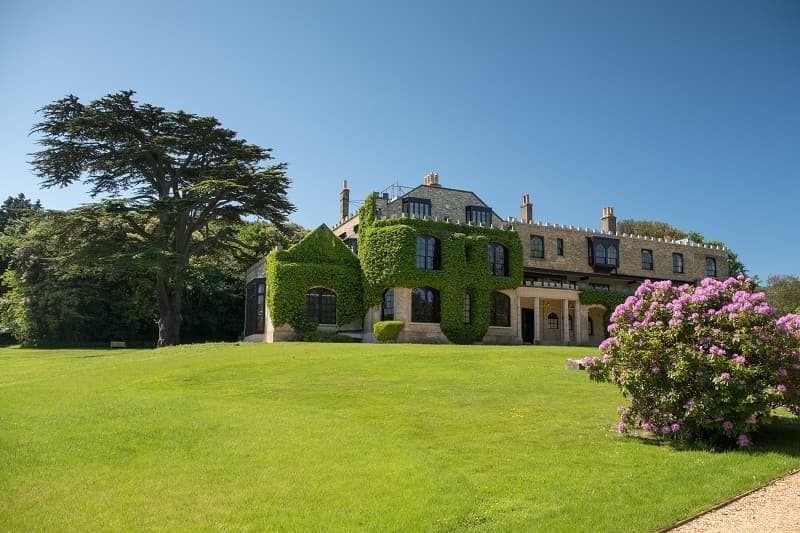
The Needles
Address: West High Down, Alum Bay PO39 0JH, United Kingdom
Entry Fee?: Yes, although certain areas are free to enter (see below). Free entry & parking for National Trust pass holders.
Website: https://www.nationaltrust.org.uk/the-needles-old-battery-and-new-battery
The Needles is a row of three (there were once four) chalk stacks that rise out of the sea near Alum Bay on the western part of the island. These are one of the most iconic features of the island and can be seen from both the shore and the water.
However, when someone is referring to visiting the Needles, they may be referring to a number of sites nearby which also include a lighthouse, two former artillery batteries, a beach, the Marconi Monument, and a small amusement park area. Queen Victoria would not have known the amusement park, but she would have known the iconic chalk stacks, the beach at Alum Bay, the Needles Old & New Batteries, and the Needles Lighthouse. We know that she visited Alum Bay and often mentioned the Needles in her journal and even made a drawing in her sketchbook of the landmark in 1860.
The National Trust operates and maintains the Old Battery, the New Battery, and viewing areas for the Needles chalk stacks and lighthouse. The Old Battery dates back to the 1860’s and was part of a military defense system built to protect Portsmouth from sea attacks from France. Later the New Battery was built to house larger and more powerful guns in the 1890’s. Both batteries were decommissioned after WW2 ended in 1945.
Although the Needles saw little military action, underground rooms at the New Battery were used for secret research and testing in the 1950’s to 1970’s, including British space rockets. Visitors can visit large parts of both batteries, learn about the daily life there, learn about the British space research program (which lead to the Blue Streak missile), and see a Victorian searchlight at the end of an underground tunnel.
There are viewing areas in a couple of places where you can get a good view of the Needles and the Needles Lighthouse (a.k.a. Trinity Lighthouse). If you need a bit of energy, we’d recommend stopping at the tea room at the Old Battery which is decorated with a retro 1940’s theme.
Separate from the National Trust site, is The Needles Landmark Attraction which is a small amusement park area that has family-friendly rides, Victorian era games, food, and attractions. Also here, you can see the Marconi Monument which marks the place where Guglielmo Marconi set up the world’s first permanent wireless station, the Needles Wireless Station. In August 1898, Marconi set up a radio network that allowed Queen Victoria at Osborne House to send wireless transmissions between Osborne House and her eldest son, Edward, who was aboard the royal yacht offshore near Cowes.
You can also take a chairlift (operates seasonally) from the amusement area down to Alum Bay beach in the summer, or you can take a footpath (lots of steps and a bit steep so not recommended for those with mobility difficulties). If it is a nice day, we’d recommend spending some time at the sandy beach which is very pretty with its multi-colored cliffs in the background. From the beach, you can see the chalk stacks and lighthouse in the distance, and in the summer you can take boats from the beach to get a close-up look at the Needles and other parts of the shoreline.
Exploring the Needles can be a bit confusing as there is the landmark itself as well as the National Trust part and the amusement park portion. There is no National Trust parking lot so the closest parking lot is the same for both and there is normally a parking fee (£5 as of 2018) during the busier months of the year (March to November). It is usually free to park during less busy times of year. If you have a National Trust pass, you get free parking any time of the year by showing your pass at the booth.
The National Trust site is a 20 minute walk from the parking lot (it is a pleasant walk but it does require walking uphill at a steep incline to reach the New Battery and the overlook points). The amusement park area is just a couple of minutes walk from the parking lot.
You can also get to the Needles via the seasonal Needles Breezer bus which takes you within a 2 minute walk of the entrance of the National Trust site. Disabled visitors should call ahead for parking alternatives or take the Needles Breezer.
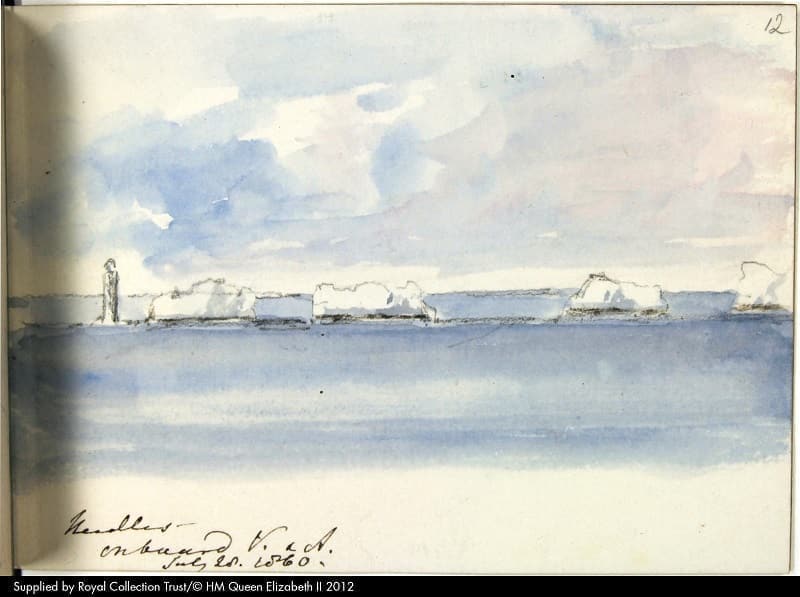
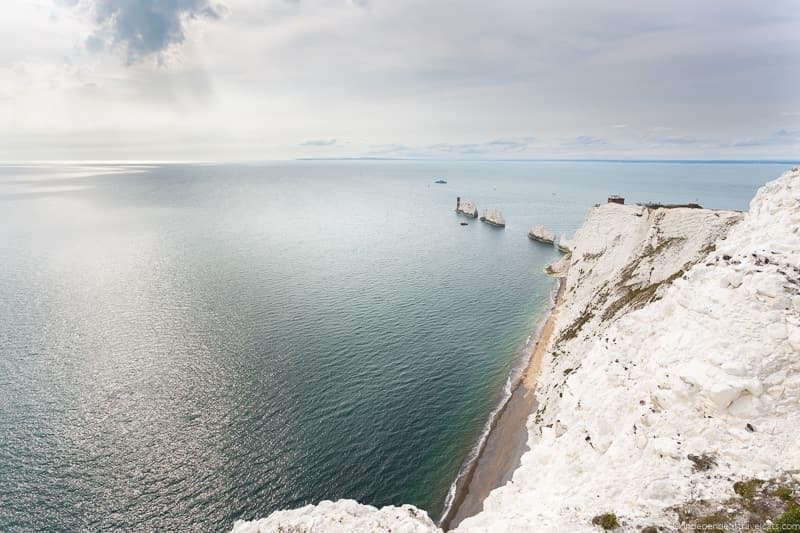
Fort Victoria Country Park
Address: Fort Victoria, Westhill Ln, Freshwater, Yarmouth PO41 0RR, United Kingdom
Entry Fee?: No. The park itself is free to visit, but there are admission fees to enter the Fort Victoria Country Park attractions (e.g., archaeology center, planetarium)
Website: http://www.fortvictoria.co.uk/thepark.html
Fort Victoria is a former military fort built as part of the coastal defense to protect Portsmouth (as were the batteries at the Needles). The earliest fort at the site dates back to the reign of King Henry VII and the latest was built in the 1850’s during Victoria’s reign. Prince Albert was involved in the design and naming of this fort. In December 1952, Victoria noted that Albert visited the fortifications being built with Lord Ragland and “returned to luncheon, much interested & pleased with what they had seen.” The fort would remain in use until 1962.
Parts of the brick triangular fort still exist and can still be seen today as part of the Fort Victoria Country Park. The park also includes several attractions, including a planetarium, a model railway, and an underwater archaeology center. The attractions have a fee to enter but you can explore the park’s woodlands, shore, and old fort sections for free (on-site parking is free).
A great place for a walk or picnic on a sunny day, and there is also a cafe if you need a snack or coffee.
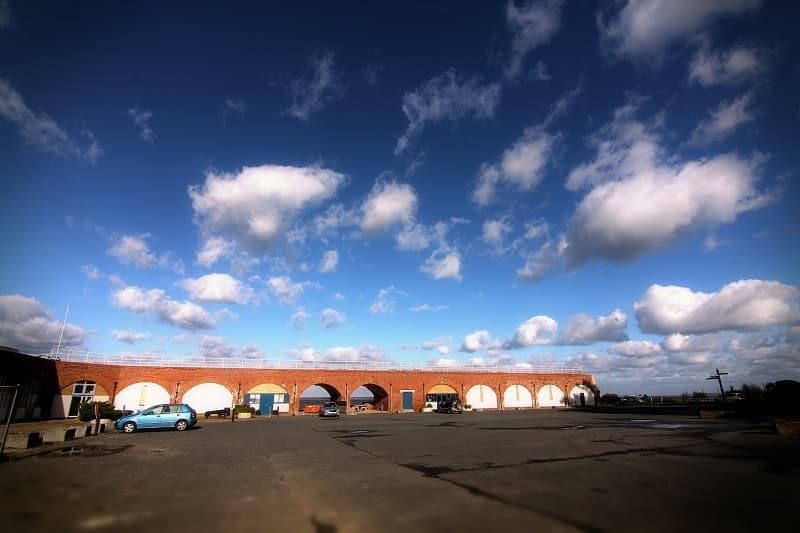
Egypt Point
Address: Egypt Esplanade, Cowes PO31 8BP, United Kingdom
Entry Fee?: No
Website: https://en.wikipedia.org/wiki/Egypt_Point
Egypt Point is located at the northernmost point of the Isle of Wight and is a coastal viewpoint. It was one of Queen Victoria’s favorite viewpoints on the Isle of Wight as it provides a panoramic view of the Solent strait and was a place where she could enjoy the sunsets. For example, on September 1, 1848 Victoria would write the following in her journal:
The view from Egypt point towards the Needles & Hurst Castle, with a glorious setting sun, in a cloudless sky, reflected in a perfectly smooth sea, was quite beautiful. When we came home, we 2 walked, feeling truly grieved that we must leave this dear sweet Island, now it is so fine.
Today you can still enjoy some nice views, see the remains of a little lighthouse that operated here from 1897 to 1989, and also watch boat races from Egypt Point. You’ll find the little lighthouse and point located between the town of Cowes and the village of Gurnard near the meeting of Egypt Esplanade and Egypt Hill. The esplanade is a pleasant place to stretch your legs and take a walk.
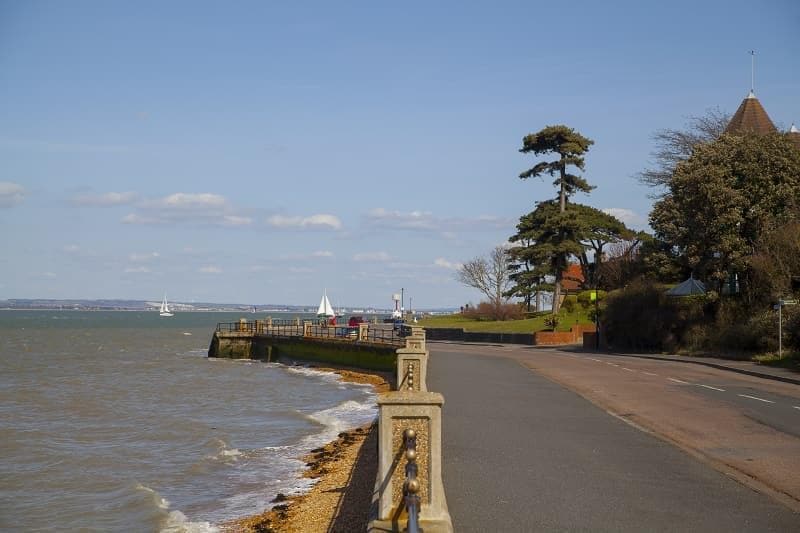
Other Queen Victoria Spots on the Isle of Wight
The above sites are some of the places with perhaps the most notable connections to Queen Victoria or the Victorian period on the island. The above sites are all regularly open to the public. However, there are dozens more places on the Isle of Wight with a Queen Victoria connection, some with more tenuous connections or ones that are less accessible to the public (or not open at all).
In fact perhaps the majority of businesses and attractions on the island have some connection with the royal family or the Victorian era! So you may discover a few of your own on your visit.
Here are several more Queen Victoria sites on the Isle of Wight that you may want to add to your itinerary (or just learn a bit more about):
- Mottistone Manor & Gardens – This site has been occupied for over 1,000 years and parts of the current house date from the 15th and 16th centuries. Victoria lived not far from Mottisone and she would have known Mottistone Manor and the then owner of the manor Charles Seely. It is said that Queen Victoria did not like Seely because he had invited Giuseppe Garibaldi (whom she disliked) to the Isle of Wight in 1864. Today, the property is maintained by the National Trust and the estate is open daily and the gardens are also regularly open to the public. However, the manor house is only occasionally open to the public for tours. Check dates and times before visiting.
- Norris Castle (East Cowes) – Norris Castle was built in 1799 for politician Lord Henry Seymour. The castle is probably the place that was most fondly remembered on the island by Victoria from her early visits. She stayed here with her mother first in 1831 at age 12 and she and members of her family would return several times. Victoria actually tried to purchase the house before buying the land for nearby Osborne House instead. The castle is privately owned and currently being restored, and is not open to the public. Check for any updates as it may open in the future, perhaps as a luxury hotel.
- Northwood House & Park (Ward Avenue, Cowes, PO31 8AZ) – This Georgian manor house was once owned by wealthy merchant George Ward and his family. In the Victorian era, it was a place of large lavish parties and social events, which Queen Victoria and her family sometimes attended. Today the house is only open to the public for weddings, conferences, and special events. There are 17 acres of parkland that are open to the public within the estate that you can visit.
- Prince Consort Building (St Thomas Street, Ryde, PO33 2DL) – This ornate building was once the home of the Royal Victoria Yacht Club. It was a private club founded by Prince Albert in 1845 after learning that Queen Victoria as a woman was not allowed in the other main yacht club on the island at the time. The club would become one of the premier yacht racing clubs of the nineteenth century. The Royal Victoria Yacht Club still exists, but it moved to another building in the 1960’s. Today, the Prince Consort Building is a private residence and is not open to the public.
- Quarr Abbey monastery (Quarr Abbey, Ryde, Isle of Wight, PO33 4ES) – Quarry Abbey is an active Benedictine monastery that was built in 1912. The site has a long history with an abbey being first built here in the 12th century. In Victorian times it was the site of the 19th century Quarr Abbey House, a residence owned by Thomas Cochrane, a naval admiral. Queen Victoria and other members of the royal family were close friends with the Cochranes and visited the house regularly from 1859 to 1900. The Queen noted on her first visit “beautiful view, nice house” and Princess Beatrice would spend her honeymoon here in 1885. The current monastery used the stone of Quarr Abbey House in its construction. The monastery has a visitor center, art exhibition area, and tea shop, and is open to the public for guided tours on limited days each month. Check ahead for opening hours before visiting.
- Ventnor Heritage Centre (11 Spring Hill, Ventnor, PO38 1PE) – A small local heritage museum and archives that tells the story of how the town grew from a tiny fishing hamlet to a fashionable Victorian resort and a haven for artists. It has a collection of documents, photographs, artifacts, and models on display. Admission is £2 (no charge for accompanied children under age 16)
- Victoria bust in Ryde (Old Town Square, Anglesea Street, Ryde). In a niche of a brick and stone archway in the old town square of Ryde (look up), you’ll find a bust of Queen Victoria that was unveiled in celebration of her Diamond Jubilee. The archway (and bust) were originally at the Ryde County Hospital (now closed) but were moved here in 1996. We read that the bust currently on display is a replica and the original is held by St Mary’s Hospital in Newport.
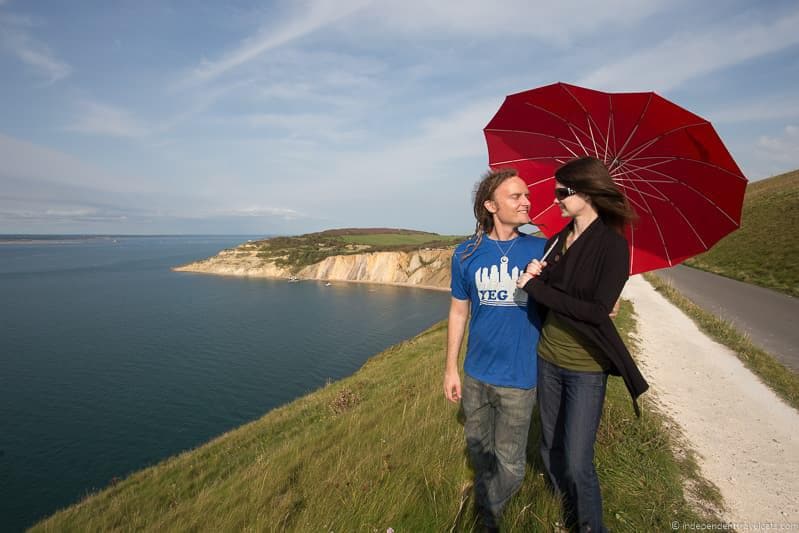
The map below shows the locations for each of the mentioned Queen Victoria sites on the Isle of Wight. The top sites mention in the first section are marked by crown icons and the places listed under “Other Victoria Sites” (some not open to the public) are marked with carriage icons. Click here or on the map below for a closer look and to see exact locations:
Where to Eat?
Below are a range of recommended restaurants which specialize in a range of options from fresh seafood to traditional pub food to fine dining. Only a couple of these have Queen Victoria ties that we know about (The Royal and Osborne House), but this should give you a good sense of the range of dining options on the island.
- The Beach Hut – If you are in Bembridge craving some seafood with a sea view, you’ll want to head to The Beach Hut. Fresh seafood, casual atmosphere, and beach bar. Seasonal.
- The Crab Shed – If you walk down to explore Steephill Cove (below Ventnor Botanic Gardens), you can reward yourself with a fresh seafood lunch from The Crab Shed. Best known for their crab pasties. Seasonal.
- Garlic Farm – If you love garlic, you’ll want to put the Garlic Farm on your Isle of Wight itinerary. The restaurant services all things garlic from a garlic mezze platter to black garlic ice cream, and Laurence loved it here! You can also do free tastings, tour the farm, and visit the farm shop at this family run garlic farm located near Newchurch. Pack some breath mints!
- The Hambrough – The Hambrough is a 5-star luxury boutique hotel with a recently renovated fine dining restaurant in Ventnor. We can highly recommend the afternoon tea and the dinners here. Great for a nice dinner out on the island. Reservations needed.
- HK Bistro (aka The Harbor Kitchen) – This casual eatery is located on the main street of Cowes and is a great stop if you are in the mood for burgers and fries. The spot has friendly staff and it is open for lunch, coffee, drinks, and dinner.
- Islay’s – A fine dining restaurant at The George hotel in Yarmouth serving modern European food with a seafood focus. Reservations strongly recommended.
- The Little Gloster – This popular family-run bar and restaurant in Gunard (not too far from West Cowes) serves seasonal dishes using island produce. Many of the dishes have a Scandinavian flair. Also known for their cocktails, music, and views over the Solvent. Reservations recommended.
- The Needles Tea Room – If you are looking for a casual 1940’s or ’50’s retro spot, stop at the Needles tea room for tea or lunch while visiting the Needles Old & New Batteries.
- Osborne House – You can eat at the home of Queen Victoria herself as Osborne House services food and drinks in several cafes, restaurants, and kiosks, depending on the season. A great place to stop for lunch or afternoon tea after exploring the house.
- The Royal Hotel – This Victorian era hotel in Ventnor is one of the oldest hotels on the island, and is one of only about 30 establishments in the world to be listed in every Michelin Guide since they were first published in 1911. It is one of the go-to places for a nice dinner out on the island and we can personally recommend the afternoon teas here as well. Reservations recommended.
- Ristorante Michelangelo – This Ryde Italian eatery is known for its tasty Italian food and sea views. Serves breakfast. lunch, dinner, and coffee. Reservations recommended for dinner.
- Seaview Hotel – This small coastside hotel in Seaview offers both a naval themed bar that serves casual meals and a restaurant with an eclectic European menu that was recently awarded a Michelin Bib Gourmand for its creative and affordable food.
- Three Buoys – If you are looking for a good seafood restaurant with sea views in Ryde, this restaurant is sure to hit the spot! Reservations recommended.
- White Horse Inn – The White Horse Inn pub in Whitwell is reputed to be one of the oldest pubs in England with records dating back to 1454! Come here for drinks, classic pub grub, and Sunday roasts in a historical but comfortable setting.
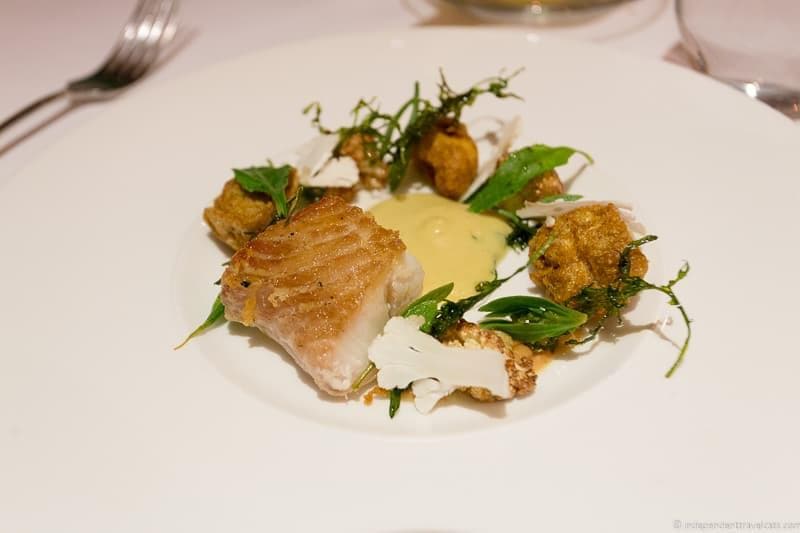
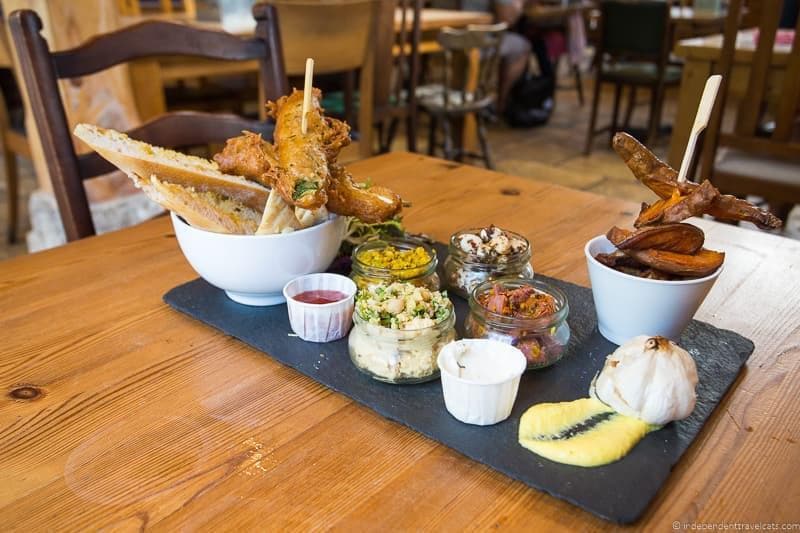
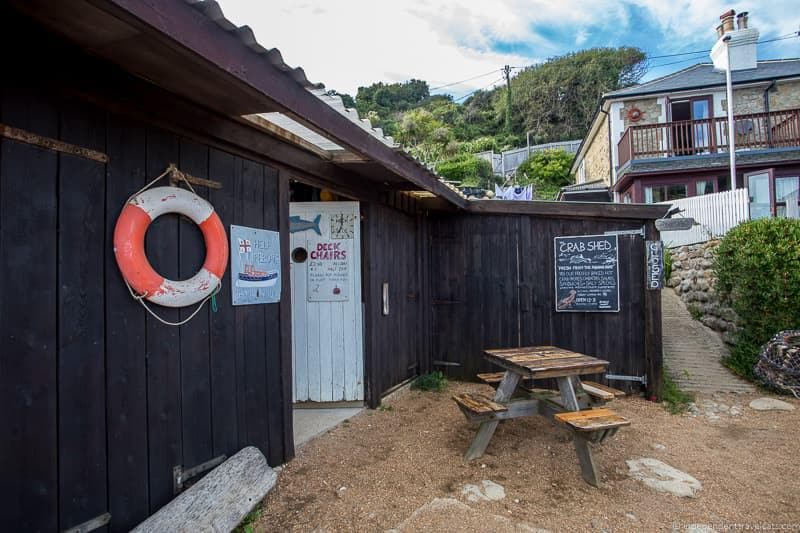
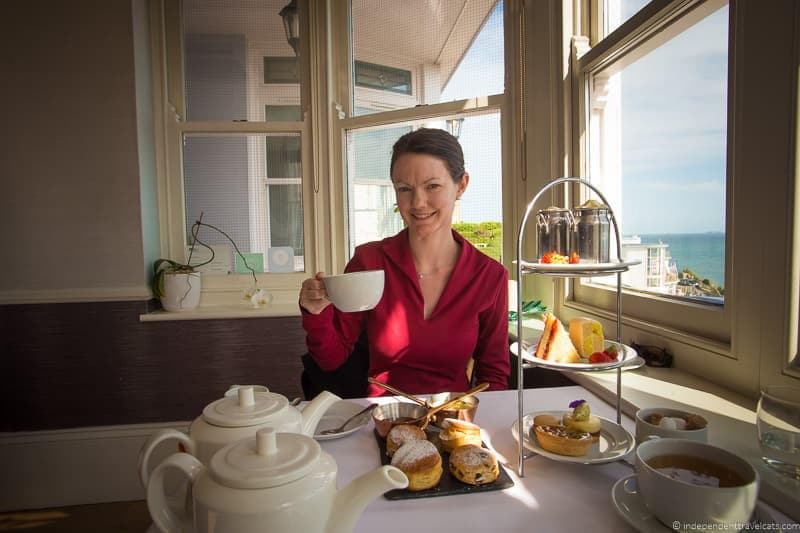
Where to Stay?
Here is a list of our Isle of Wight lodging picks geared towards those interested in Queen Victoria, historical properties, unique stays, and/or the finer things in life! Many of the recommended properties date back to the Victorian era or have a Queen Victoria connection. They include self-catering cottages, luxury hotels, and even a boutique hotel that was once part of Queen Victoria’s Osborne Estate. They range in price from good value spots to luxury stays.
- Albert Cottage Hotel – This 10-room stylish boutique hotel was once part of Queen Victoria’s Osborne Estate. Well-decorated and set within 2 acres of gardens, located a short distance from Osborne House.
- Bowling Green Apartment, Carisbrooke Castle – This 19th century service block turned holiday cottage is set within the walls of Carisbrooke Castle. A great stay for families wanting to experience some castle magic on their trip.
- Farringford Cottages – There are several self-catering cottages available on the grounds of Farringford, the former home of Lord Tennyson. They vary in size and are perfect for couples and families looking for privacy and wanting to cook their own meals.
- The George – This 3-star 17-room hotel is located in Yarmouth within a Georgian townshouse, former home of past Isle governor Sir Robert Holmes. The hotel offers coastal views, a conservatory, and a restaurant.
- The Hambrough – The Hambrough is a 5-star luxury boutique hotel situated by the harbor in Ventnor, offering intimate service with only 7 rooms and suites. We have stayed here and can personally recommend one of the rooms with a balcony and sea views. They also offer a few self-catering lodging options as well.
- Priory Bay – Priory Bay is the island’s top country house hotel with an amazing history. The 18-room property includes historic tithe barns and the hotel itself is a mix of Tudor to contemporary architectural styles. Quiet setting by the sea with great views and gardens.
- The Royal Hotel – The Royal Hotel is a 4-star hotel in Ventnor offering 51 well-furnished rooms. Built in 1832, this historic hotel was a popular place to stay during the Victorian era and remains one of the best known hotels on the island.
- Royal Esplanade Hotel – The hotel offers 70 rooms in a pretty Victorian building situated near the sea in the town of Ryde. This hotel is a great for those looking for a taste of a Victorian seaside holiday with good-value rates. Hotel has a full-service bar and restaurant.
- Sergeants Quarters, Golden Hill Fort – The former Golden Hill Fort, one of a number of Victorian era forts built on the Isle of Wight, has been turned into self-catering properties with luxury amenities. Property comes with brick barrel-vaulted ceilings, heated oak floors, and scenic views over the Solent and English Channel.
- Ventnor Botanic Garden cottages – If you love gardens, you can rent a cottage within the Ventnor Botanic Garden, the former site of the consumptive hospital and gardens that Queen Victoria visited. They offer a range of lodging options which include cabins, a cottage, glamping, and camping. Meals can be provided and free entry to the garden is included.
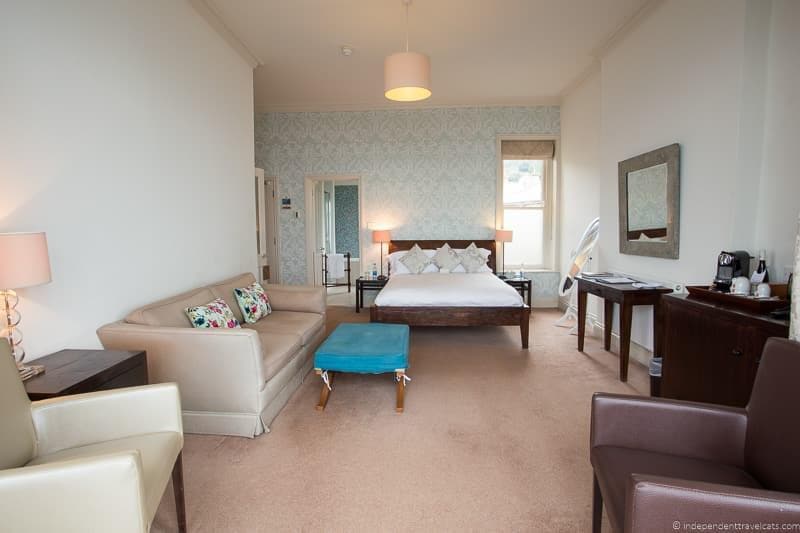
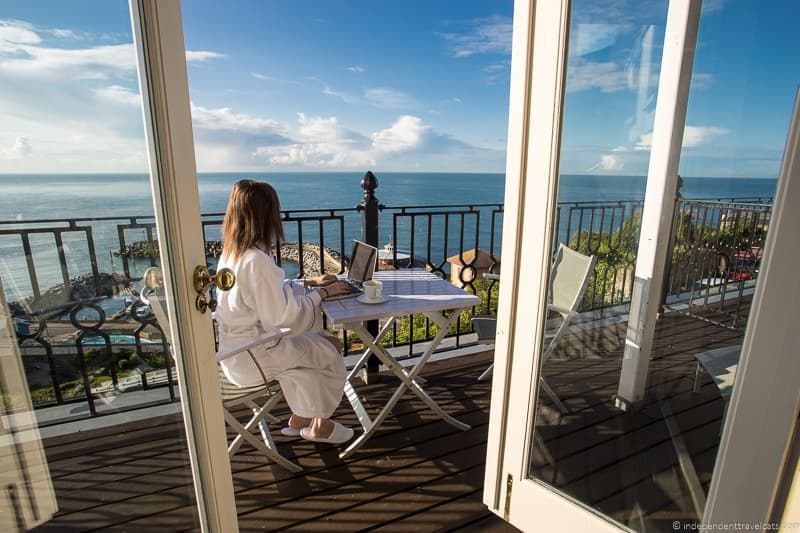
Further Resources for Planning your Trip to the Isle of Wight
Below are some tips for traveling to the Isle of Wight, information about our sources for the research we did on Queen Victoria, and further resources for where to find more information on planning a trip to the Isle of Wight.
How to get to the Isle of Wight?
Unless you have a private boat or helicopter (or plan to hire one), you’ll need to get to the Isle of Wight by either a ferry service or the hovercraft. The ferry services can take car, bikes, and foot passengers.
From mainland England, regular ferries operate from Portsmouth, Southampton and Lymington, arriving on the island at Fishbourne, East Cowes, Yarmouth, Cowes, and Ryde.
There are three main companies operating regular services: Red Funnel, Wightlink, and Hovertravel. Journeys take between 25 to 60 minutes depending on the departure point and company. We have always taken the Red Funnel service which is the longest running company offering this service, operating from Southampton to Cowes.
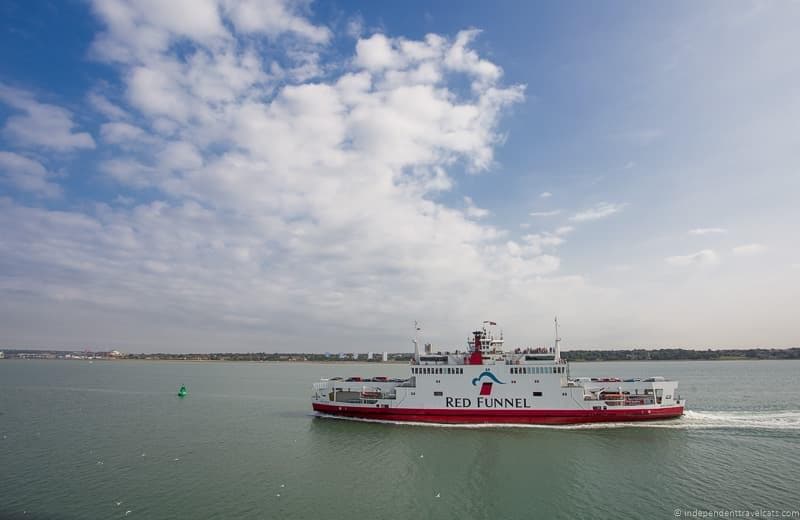
How much time do I need to visit the Isle of Wight?
This really depends on what you want to see and do, and the pace at which you enjoy traveling. If you wanted to see most of the attractions in this post, I’d recommend at least 3 or 4 days to visit them all and have time to enjoy them. You can choose several favorites (e.g.,Osborne House, Carisbrooke Castle, Ventnor Botanic Garden, Needles) if you just have the weekend or a couple of days. A week is a good amount of time to visit all the island’s main towns and attractions, hit the beaches, and enjoy some leisure time.
Luckily, the distances between any two points on the island is never more than a 1 hour drive away and you can save a lot of time by grouping places together as most attractions are clustered around five towns: Cowes, Ryde, Newport, Ventnor, and the Freshwater/Yarmouth area. These are also the five areas of the island where you’ll find the most dining and lodging options.
Getting around the Island?
You have several options. A car is going to be the fastest but most expensive option (ferry crossing cost and/or rental cost). There are also local cab and taxi services on the island.
Most places on the island can be reached via public transportation, and you can take a look at the island’s bus schedule which also includes the tourist-oriented Needles Breezer and seasonal Island Coaster buses that specifically stop at popular attractions.
If you enjoy biking and have a bit of time, the island is a popular cycling destination and most of the attractions are relatively easy to reach by bike.
Walkers and hikers may want to enjoy the countryside and make their way around the island on foot.
Queen Victoria and the Isle of Wight Resources
We used two main resources in coming up with this list and doing research on Queen Victoria sites on the Isle of Wight. The first is the Victoria’s Island Trail information put together by the Isle of Wight tourism board to promote the island’s attractions related to the Queen. The website includes information and a map of fourteen Queen Victoria attractions on the island. Highly recommend checking it out, and you can access it here.
The second was Queen Victoria’s journals and transcriptions of her journals available online. Queen Victoria was an avid letter writer and chronicler, keeping a detailed daily diary from July 1832 to her death.
After Victoria’s death, Princess Beatrice, upon her mother’s instructions, spent years going over her mother’s journals, removing anything she thought offensive or could harm the royal family. Beatrice later destroyed most of the original journals, although Lord Esher had already transcribed the original volumes from 1832 to 1861 before Beatrice destroyed them. Lord Esher used the transcriptions to assist in editing a 3-volume book called The Letters of Queen Victoria: A Selection from Her Majesty’s Correspondence, which is free to access online.
Even from the edited diaries you can still get a good sense of Victoria’s daily life and there are many entries from her time at Osborne House. These diaries were scanned and made available online in 2012 by Queen Elizabeth II and can be accessed here.
In terms of general books about Queen Victoria, there are hundreds if not thousands about her, her reign, and her family. I have only read a couple, but there are hundreds available online in both paper and digital formats. Check out this list and read the reviews to find the one that might be of most interest to you.
Those with a strong interest in Osborne House may want to pick up this English Heritage guidebook which presents the history, architecture, and loads of photos about the house and the royal family’s visits.
If you are looking for TV series or films about Queen Victoria, I’d recommend watching the ongoing Victoria series. In terms of films, here are a few you may want to check out (each focuses on a different part of her life): The Young Victoria, Victoria & Albert, Her Majesty, Mrs. Brown, and Victoria & Abdul. Many scenes for Victoria & Abdul were filmed at Osborne House.
Are there any island discount passes?
There are no discount passes specific to the Isle of Wight of which we are aware, but the ferries often run some discounts for attraction entry fees so I’d keep an eye out.
If you love historical sites, I’d check out prices and inclusions for the National Trust and English Heritage passes. You can save money by using an English Heritage and/or National Trust pass which allows you free entry into several historical sites on the island (e.g., Osborne House, Carisbrooke Castle, The Needles, Mottistone Gardens) as well as the rest of the UK.
If you are an international visitor planning to visit a number of historic homes, castles, and gardens during your UK trip, you can purchase less expensive versions of these passes designed for tourists: the English Heritage Overseas Visitor Pass and National Trust Touring Pass. These two passes cover a number of recommended sites on the Isle of Wight as well as elsewhere in England.
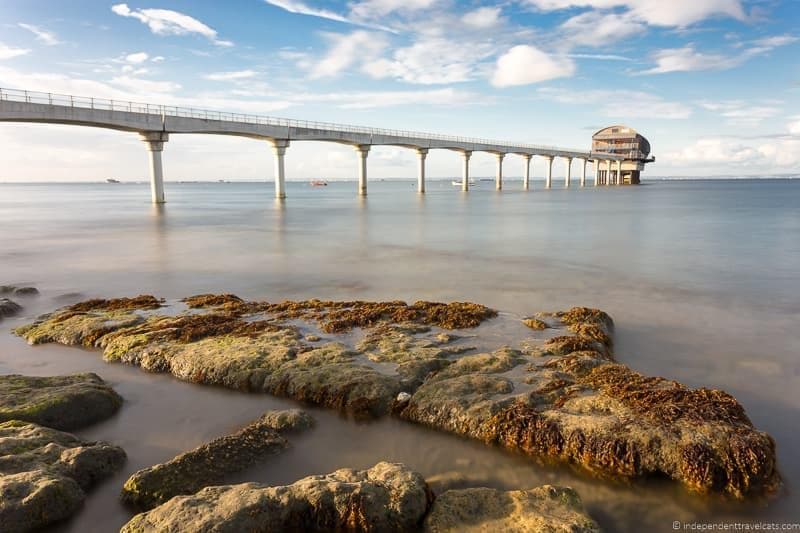
Further Resources to Plan your Isle of Wight Trip
- Check out the Isle of Wight official tourism website for loads of resources for planning your trip to Isle of Wight and to check for special events and festivals that may be happening during your visit. There are also other themed trails that may be of interest including the Literary Heroes and Winston Churchill trails.
- For more trip planning resources, check out Laurence’s recommended 2 Day Isle of Wight Itinerary for more places to go (not everything has to do with Queen Victoria!) and tips on visiting the island. If your trip is taking you elsewhere in the UK, this 2-week UK itinerary and my detailed 6 day London itinerary may come in handy.
- If you are looking for an Isle of Wight guidebook, you might want to check out this Rough Guides guidebook. Those planning on doing a lot of walking or hiking may want to pick up this island hiking guidebook and/or this Isle of Wight walking map.
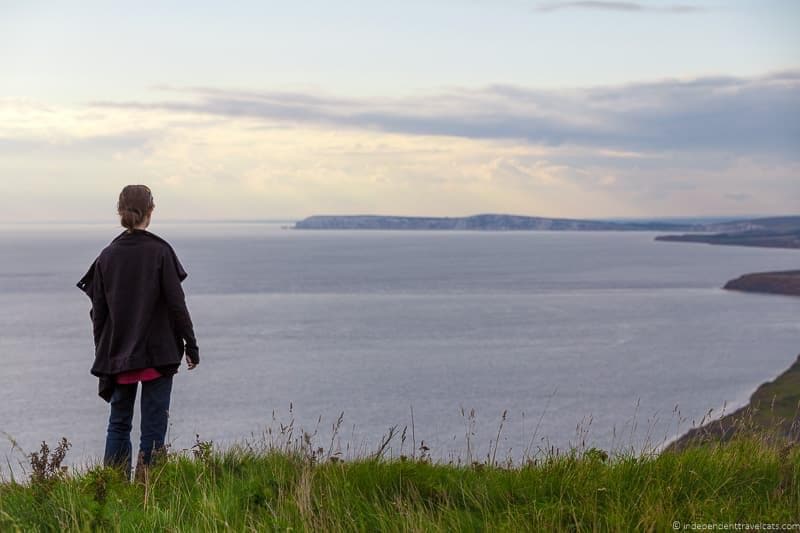
So that is our guide to Queen Victoria sites on the Isle of Wight, and we hope you enjoyed our little tour through Victorian Isle of Wight!
Were you surprised about how many Victorian and Queen Victoria related sites there are on the Isle of Wight? Have you visited any of these, or have any noted for a future itinerary? If you have any questions or comments, we love to hear from you, just leave us a note in the Comments section below!

**Disclosure: We partnered with Visit Isle of Wight who helped us plan the logistics of our last trip to the Isle of Wight, and who helped cover or arrange our ferry tickets, accommodation, some of our meals, and entry into local attractions in order for us to share our experiences as travel writers. However, as always, this article contains only our own honest thoughts and opinions. You can read more in our Ethics Code about how we accept work.**

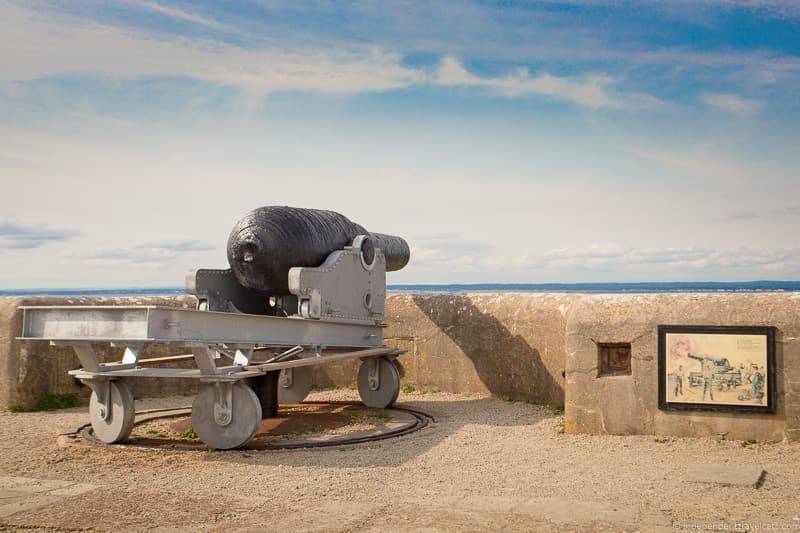
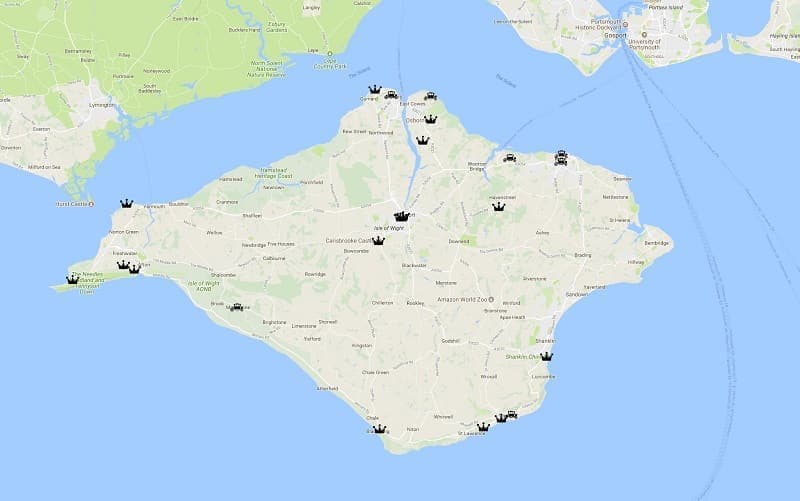
David M. Smith Post author
I am trying to re-create numerous holiday visits to the IOW in the 1950’s. The hotel was in St Lawrence between the main road and the sea coast. One of its attractions was a disused and crumbling pier below the hotel where Queen Victoria’s barge would bring Her Majesty to the island. Does anyone recall exactly where that was and whether there is anything left of the hotel or pier?
Jessica & Laurence Norah Post author
Hi David, I don’t know the answer to your question, but I am wondering if you may be talking about the Ventnor Pier which was built in the Victorian era and demolished in the 1990’s? Hotels…two places to check might be The Royal Sandrock Inn (now gone) and the Old Park Hotel (seasonal but still operating!). If neither of those are the hotel, I would contact the Ventnor Heritage Centre (good place to start since it would be nearby) or the Museum of Island History in Newport. Best of luck in finding the hotel (and hoping it is still there)! Best, Jessica
jenni sheldon Post author
I have never been to the Isle of Wight and since i live in the South of England it isn’t even that far! This is going to change as after reading this i have added it to my list of places to visit in 2018.
Jessica & Laurence Norah Post author
Hi Jenni, Oh, yea, that is exactly the reaction we want is for someone to decide to visit the Isle of Wight! Good to visit any time of the year, but I’d recommend the warmer months (March/April to Oct.) for a first time visit so you can better enjoy the beaches and seasonal eateries/attractions. Hope you have a great time! Best, Jessica
wanderlustvlog Post author
A very complete and a very interesting and cultural guide on the Isle of Wight! Very impressive pictures as well!
Jessica & Laurence Norah Post author
Glad you enjoyed our post and photos, and thanks for taking the time to comment! Best, Jessica
Stephanie Be Post author
These are great spots! I love how you give the address for each too which makes it very useful. I’m in the UK pretty often, will def have to check out the Isle of Wright!
Jessica & Laurence Norah Post author
Hi Stephanie, Great, hope you get a chance to check out the Isle of Wight on your next vacation in the UK. Let us know if you have any questions on your next trip to the UK, we have loads of guides and tips articles across our two blogs! Best, Jessica
Kevin Wagar Post author
What a step back in time it would be wandering through these towns and castles would be! I need to add this to my list of places to go!
Jessica & Laurence Norah Post author
Hi Kevin, Yes, the Isle of Wight is great for travelers who love history (or the water and beach!) and hope you get a chance to visit. Best, Jessica
Liz Deacle Post author
Wow! What an in depth post! I lived in england for 40 years and cant believe I didnt vist this wonderful island… Osborne House looks amazing. The whole island is just stacked with history isnt it? And I noticed in one of your pics that the fish n chips are popular too!
Jessica & Laurence Norah Post author
Hi Liz, I hope you have a chance to visit the Isle of Wight soon! There are loads of historical sites from excavated Roman villas to medieval castles like Carisbrooke to Victorian homes and amusement parks – it is a great place for those who love history. Yes, seafood is very popular on the island and many specialize in local seafood, although many of the casual beachside spots are seasonal. Best, Jessica
Punita Malhotra Post author
The world is full of beautiful historical hidden gems like isle of Wight, and they are slowly coming into the limelight now. Frankly I had never heard of it until I read your post, but now can’t wait to visit. Each of the sights is wonderful and though you mention at least 3-4 days, I think we may linger longer. 🙂
Jessica & Laurence Norah Post author
Hi Punita, Glad that the Isle of Wight is now on your list, and yes, you can easily spend more than 3 or 4 days on the island and still find plenty of things to do. But as a minimum we’d suggest 3 days. Also very easy to combine with a trip to Portsmouth or Southampton on the mainland. Best, Jessica
Seana Turner Post author
The first thing I had to do was to look up where the Isle of Wight is – Americans, right? I had this vague image of a tiny place, and never would have thought there was this much to do. That ceiling in Osborne House is unbelievable! Once again, a tremendous job giving all the needed details. I’d definitely visit here:)
Jessica & Laurence Norah Post author
Hi Seana, Don’t feel bad, I doubt many Americans (or anyone outside the British Isles) know where the Isle of Wight is or much about it. It is most famous probably for two things, one is Cowes Week and boat racing and the second is Osborne House and its association with Queen Victoria. It is also very popular for walkers and bikers, and a hotspot for retirees to live. Yes, Osborne House is gorgeous and the room you are probably referring to is the Durbar room, which is the most visually stunning room in the house and has an Indian theme to it as Queen Victoria was then Empress of India. Hope you get a chance o visit some day! Jessica
Neel Post author
Wow, I actually had no idea most of this was here, I guess I’ve remained quite ignorant to the Isle of Wight. I’m definitely going to have to bookmark this article for the day I decide to visit!
Jessica & Laurence Norah Post author
Hi Neel, We have friends who moved to the Isle of Wight a year or so ago and started visiting. Before that, we didn’t know much either and my husband lived in England for years. Although if you are into boat racing or yachting it is home to Cowes Week which is where some of the most famous boat races in the world are held each year. But definitely an interesting place to visit if you are in southern England! Best, Jessica
Tanja Post author
so many wonderful things on such a small island:)
Jessica & Laurence Norah Post author
Hi Tanja, Indeed, there is a lot packed onto the Isle of Wight. It is often called “England in Miniature” because of the diversity in landscapes found in such a compact place! Best, Jessica
Medha Verma Post author
First of all, let me say you’ve done a commendable job with the pictures, they’re AMAZING! I’m sold on visiting most of these sites if I am ever in Isle of Wight. I have often been inspired by Instagram pictures and followed them to get to the place and it seems I might just end up doing the same with the places you’ve mentioned here. I’m a big fan of historical architecture and I am so intrigued by the Osborne House and the Carsibrooke castle. Thanks for this very comprehensive guide.
Jessica & Laurence Norah Post author
Hi Medha, Thanks so much, glad you loved our photos! It sounds like you would enjoy the Isle of Wight and there are definitely some Instagrammable buildings and views here. In terms of architecture, there are excavated Roman villas (a few you can visit), medieval architecture like Carisbrooke, Tudor such as the front of Priory Bay hotel, and lots of Victorian and onwards. Famed architect John Nash actually moved to and later died on the island and built a castle there (sadly now gone), but his Guildhall still remains as the Newport Visitor Center and museum. We have only been on the island twice and still have only visited about half of the main sites as we keep discovering new ones! Best, Jessica
Sarah Ricks Post author
Queen Victoria’s description of the rooms of that house as “small” made me laugh out loud, especially when I saw your photo of the entire palatial place. And those interiors! Gorgeous, in an overdone Victorian way. Beautiful photos of the coast and surrounding areas.
Jessica & Laurence Norah Post author
Hi Sarah, Queen Victoria was an interesting lady and I find some of her journal entries amusing. I think in that instance she was referring to the house that stood there before they completely rebuilt it and enlarged it (there was a smaller mansion on the site when the bought it), but even so I can’t imagine it would have been small to your average person. I guess as a woman who lived in a series of palaces and castles her whole life, Osborne probably did feel pretty small and cozy to her! If you have a chance to visit the Isle of Wight, highly recommend stopping here, it is a beautiful house with a lovely garden and beach. Best, Jessica